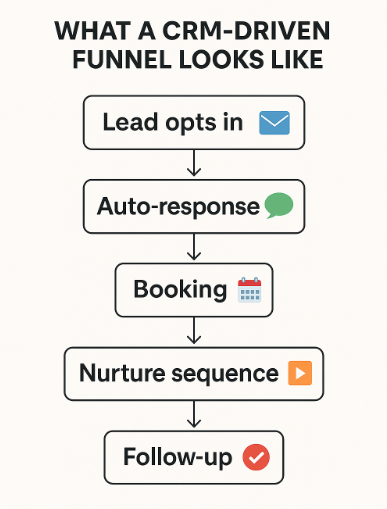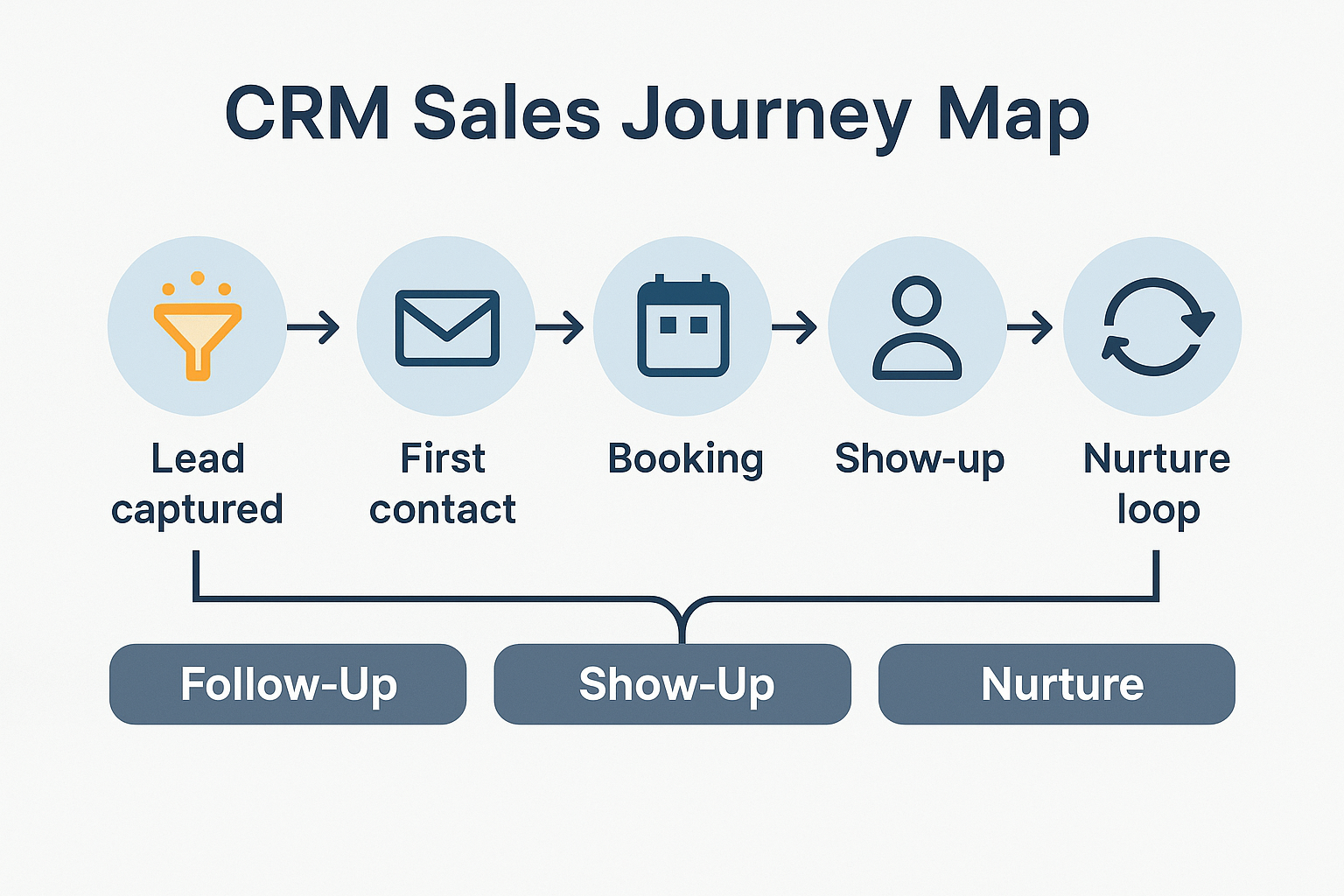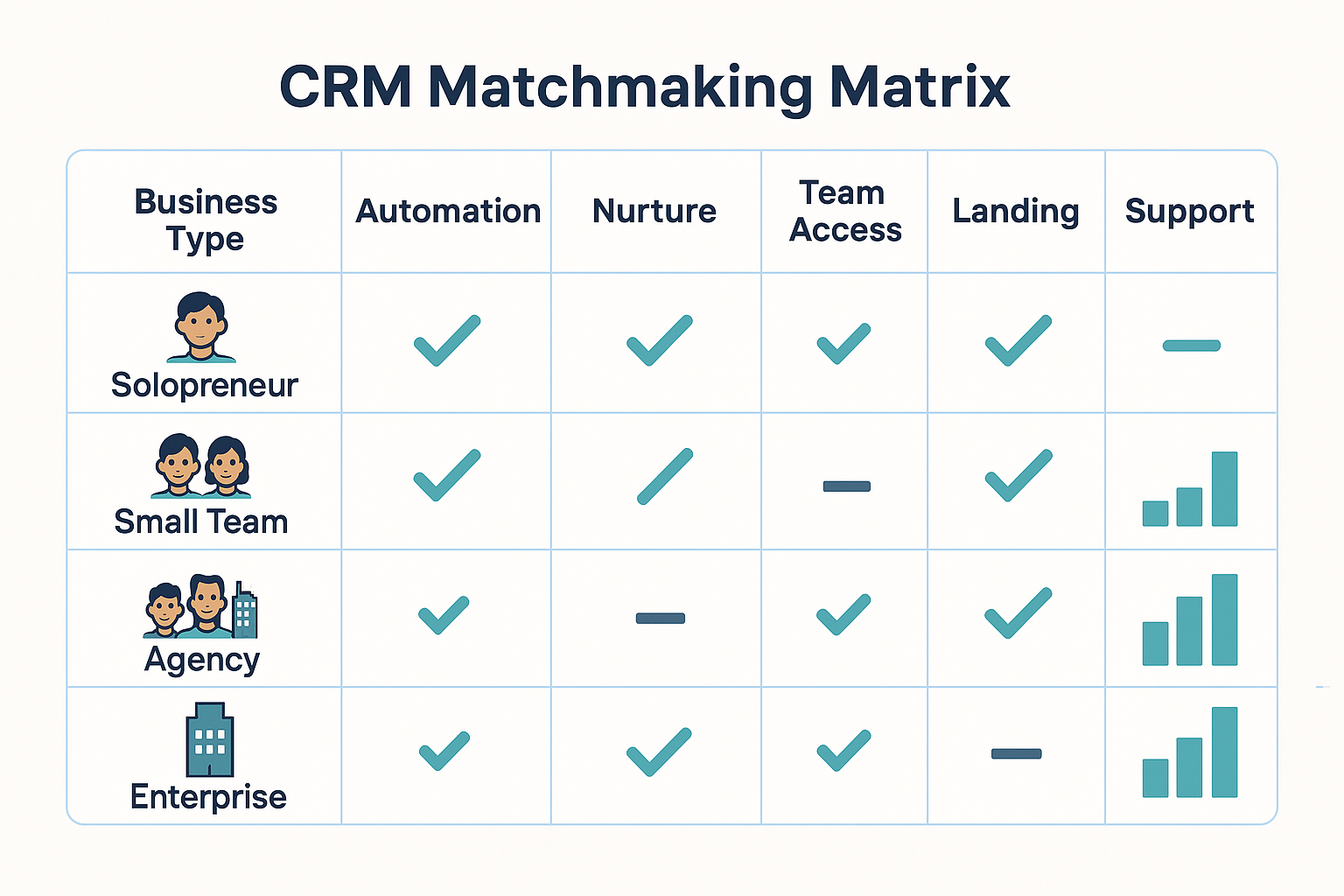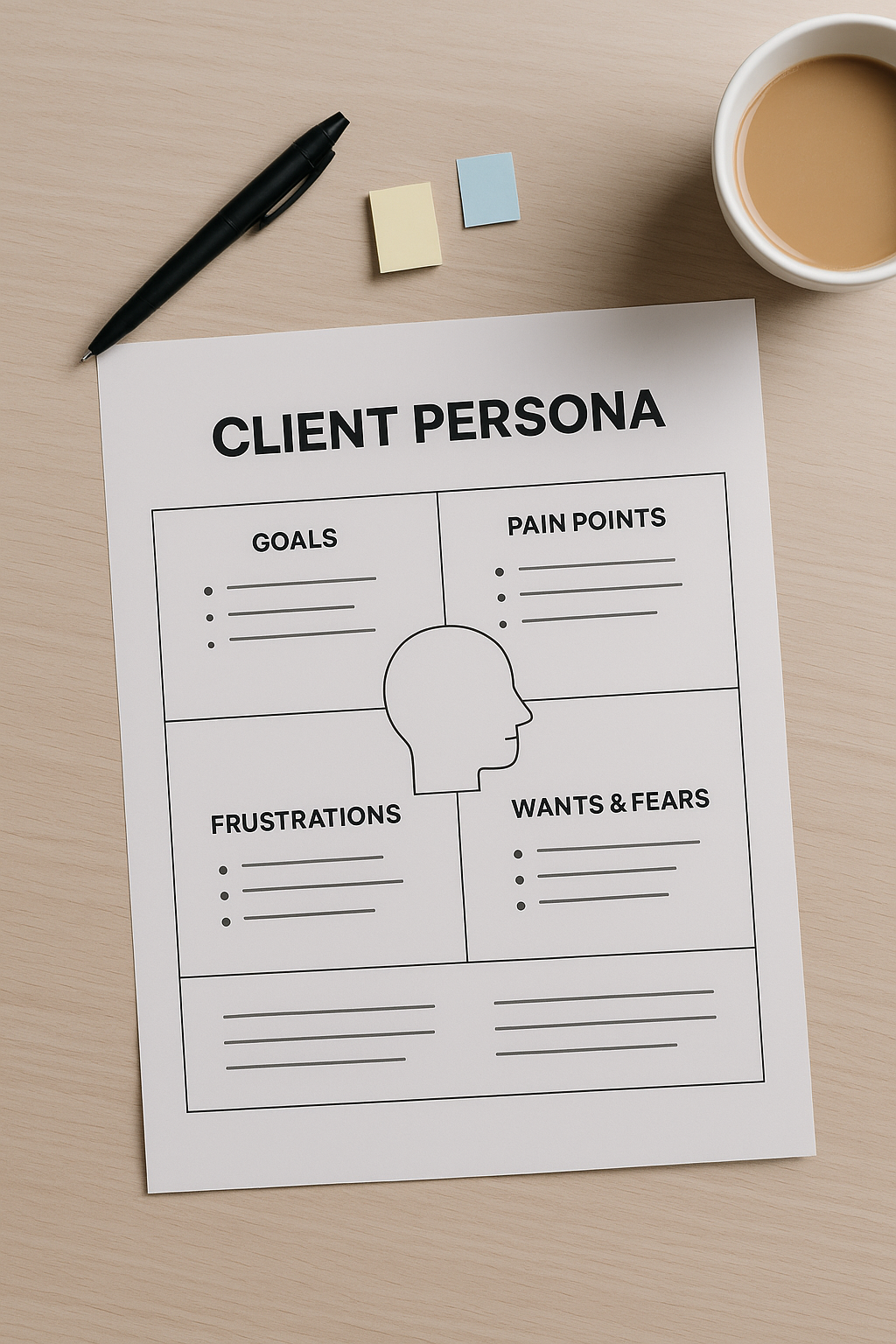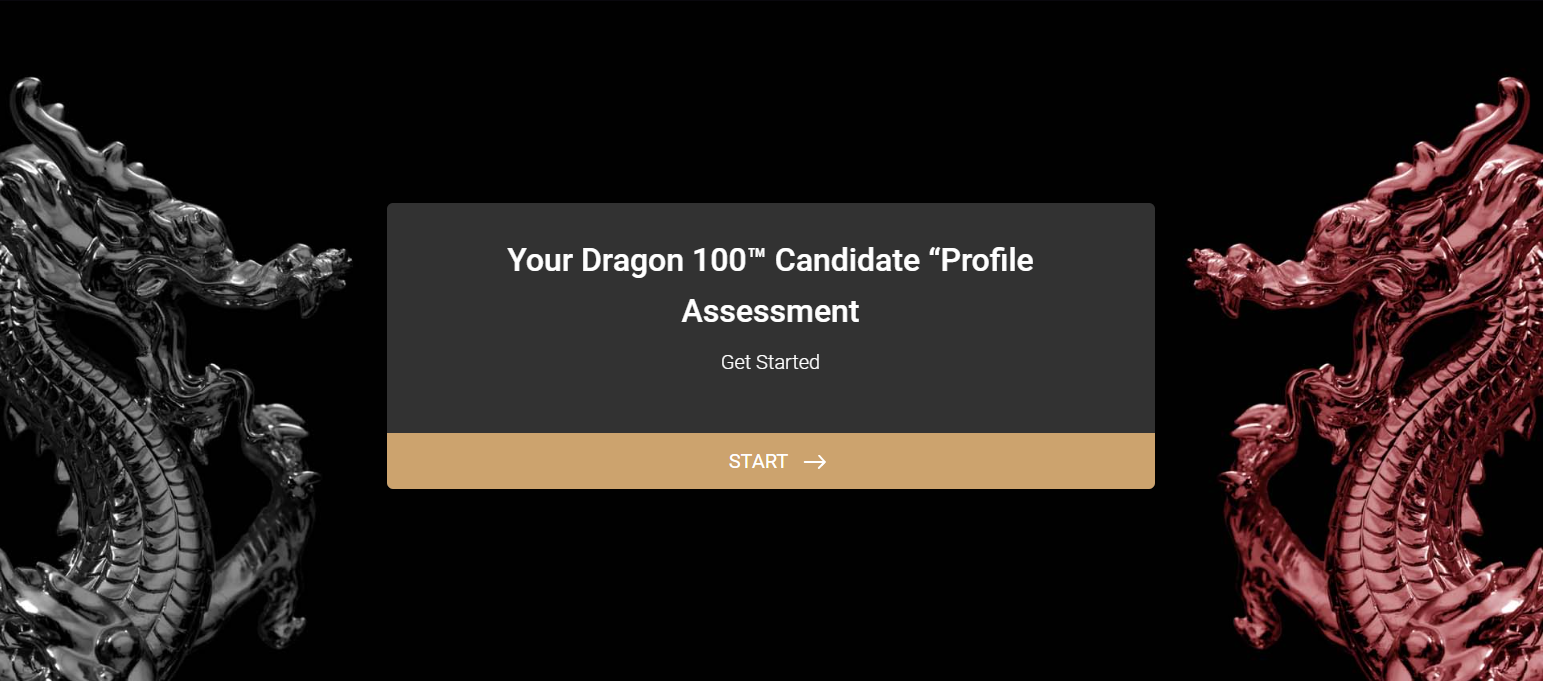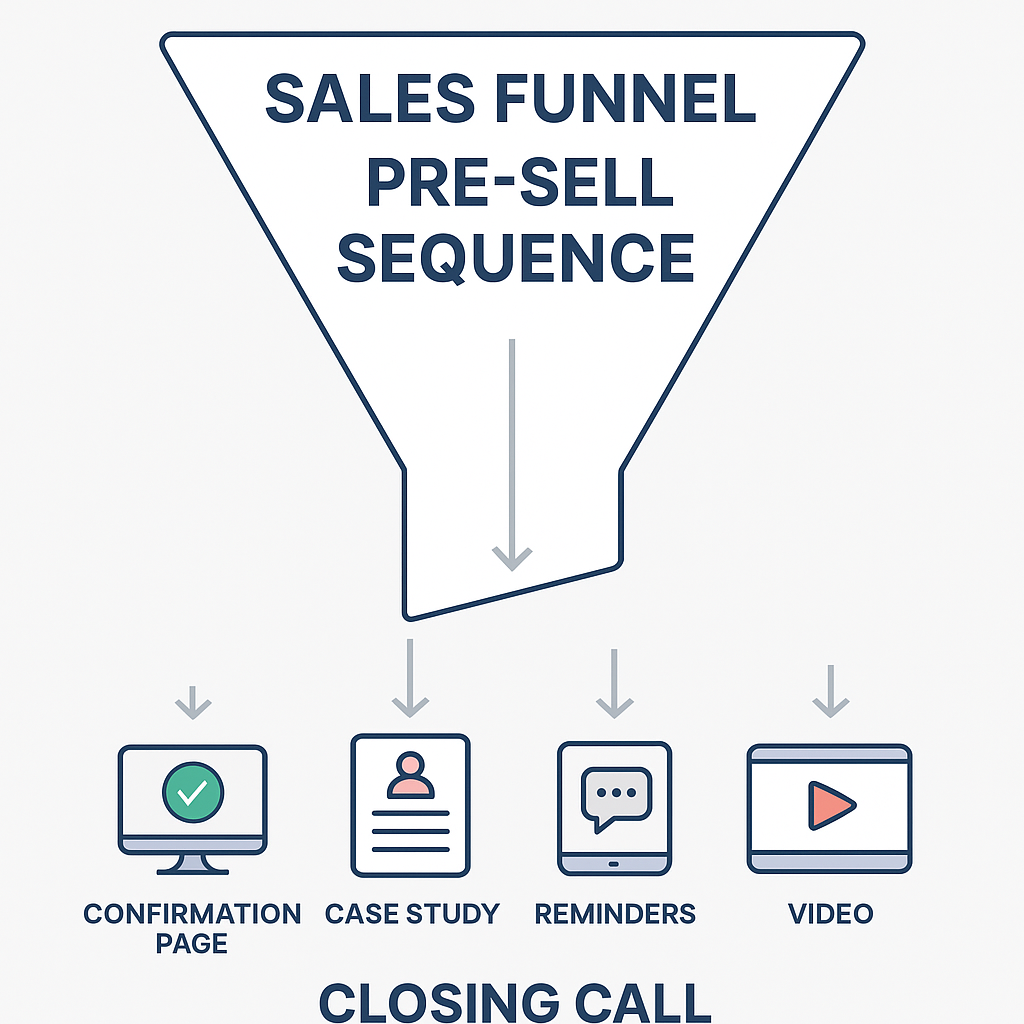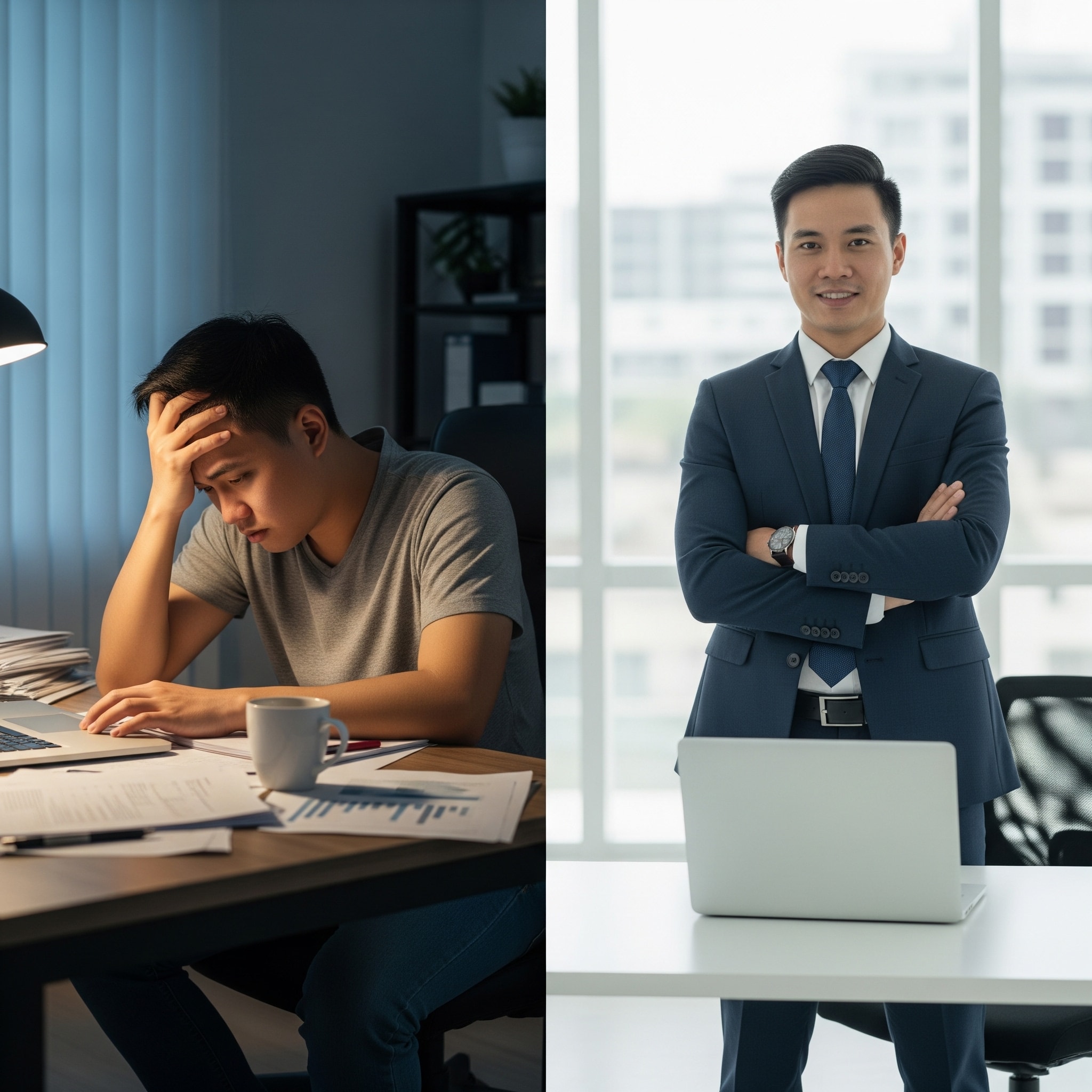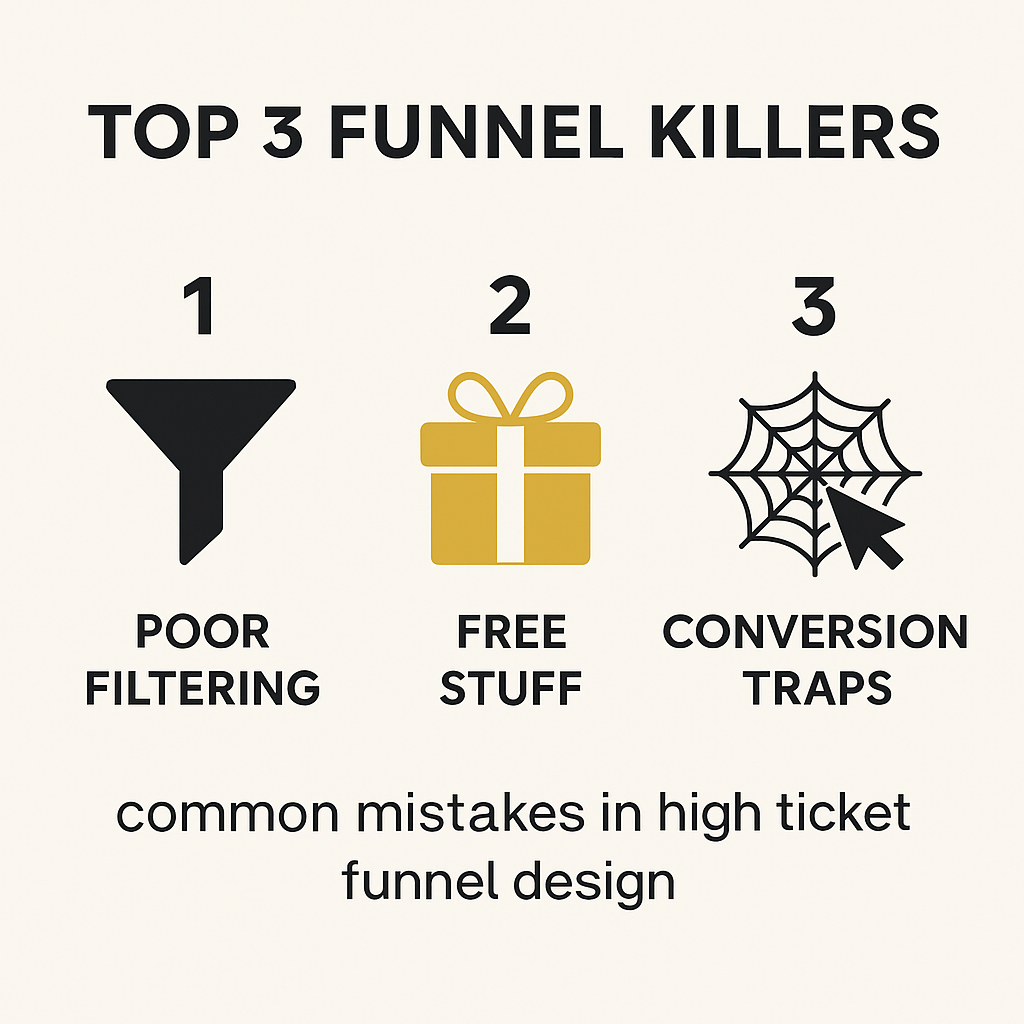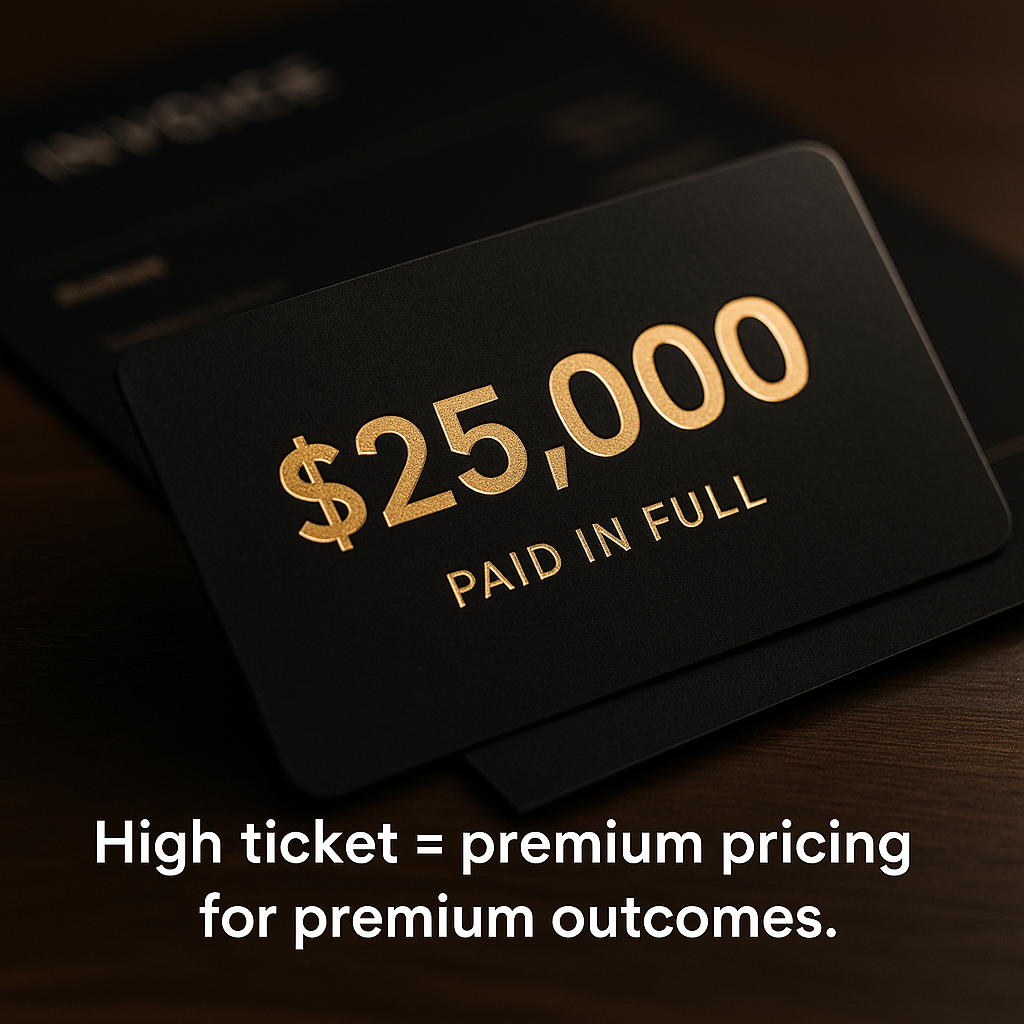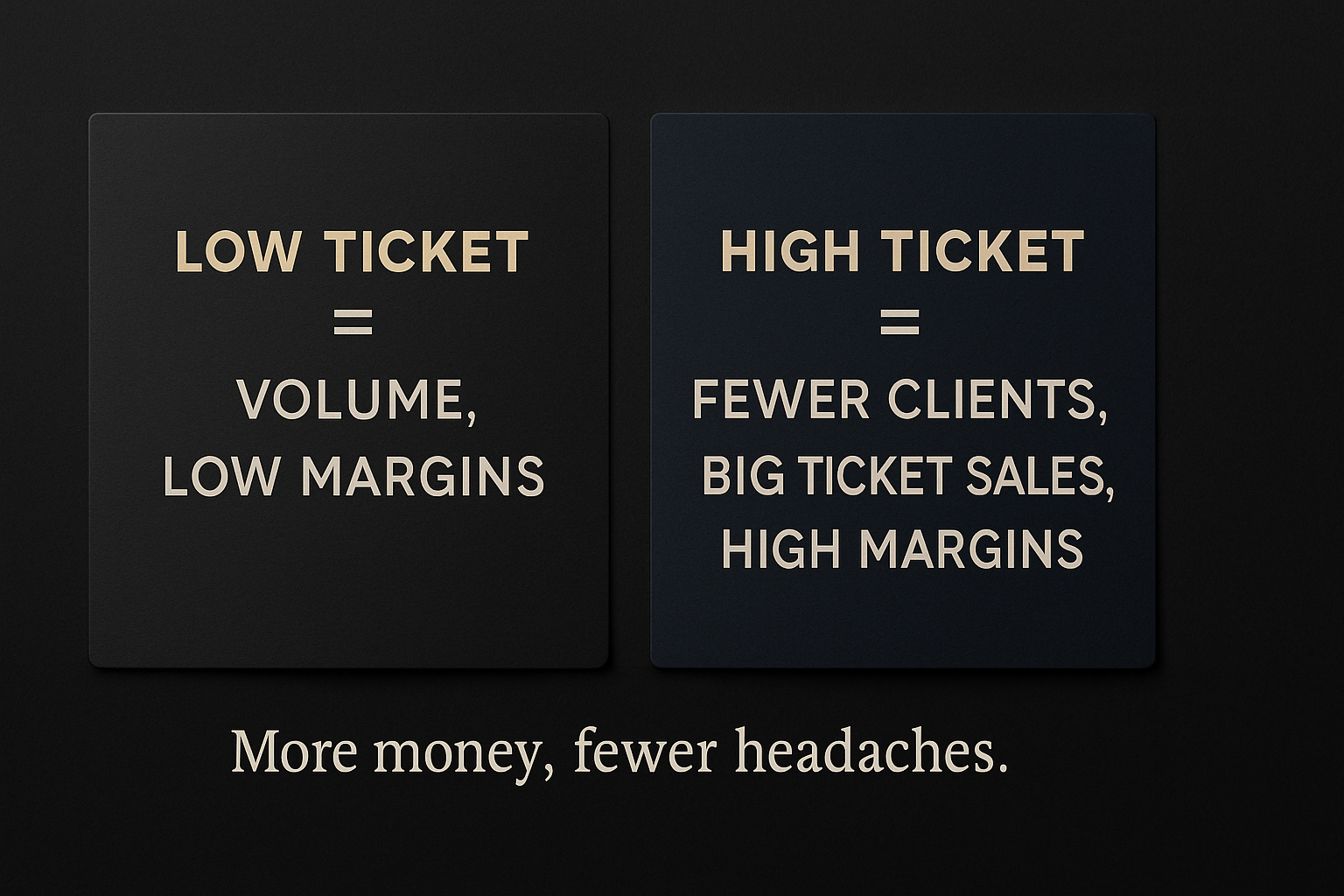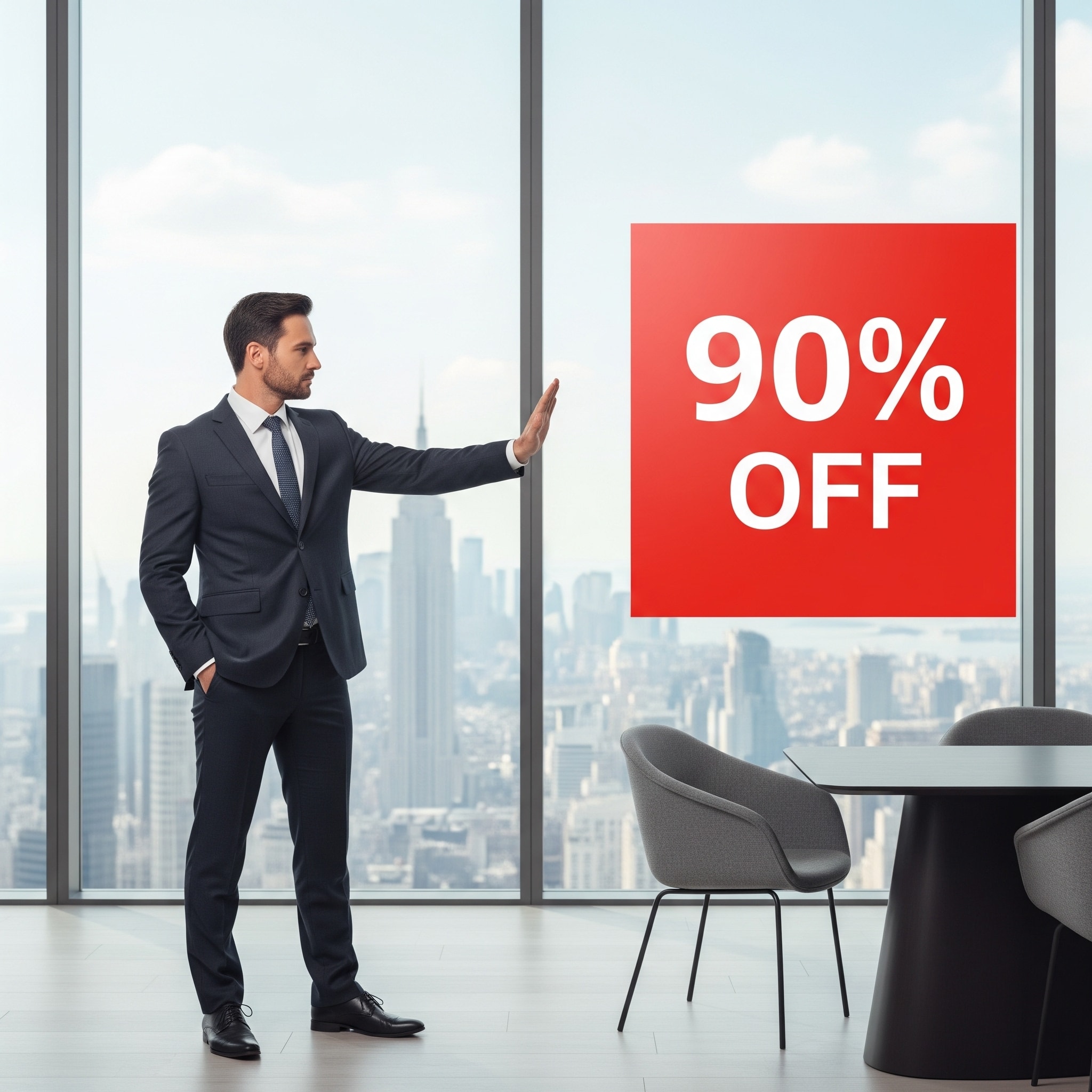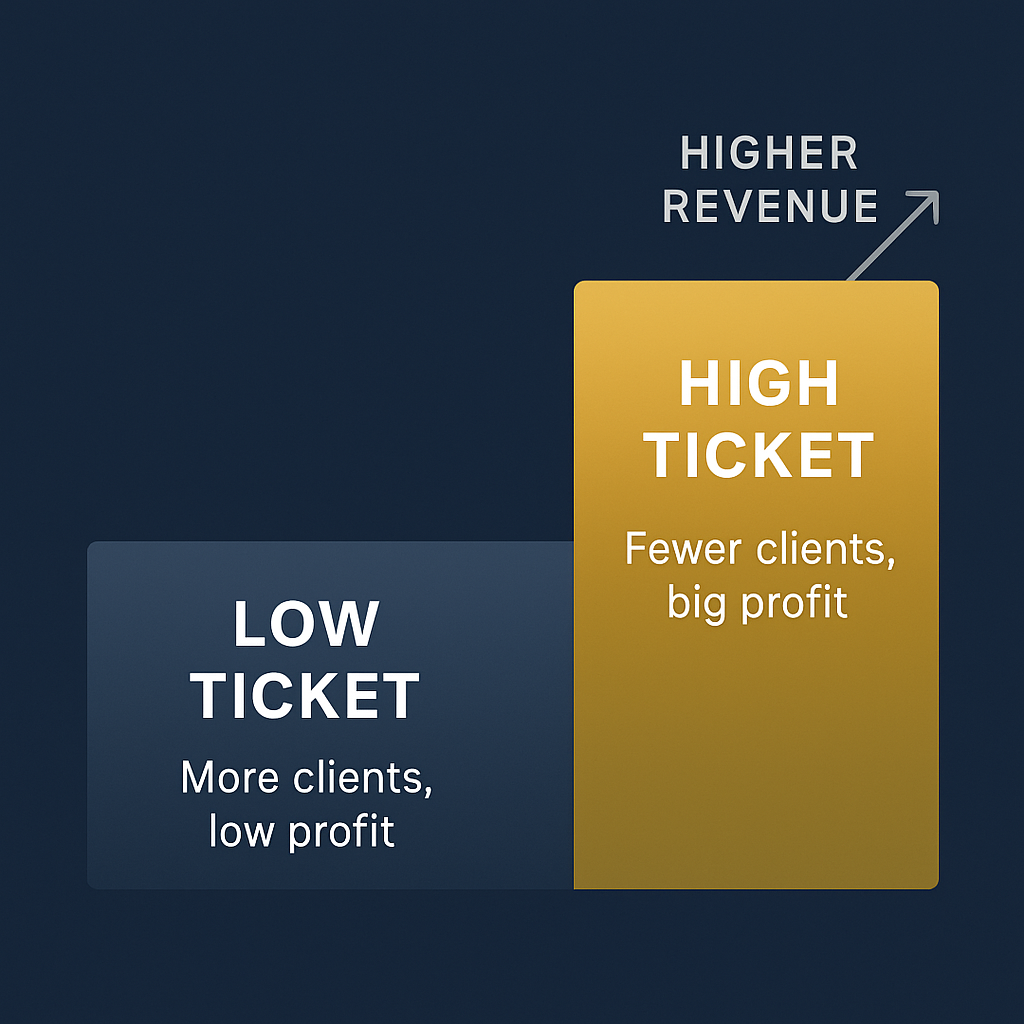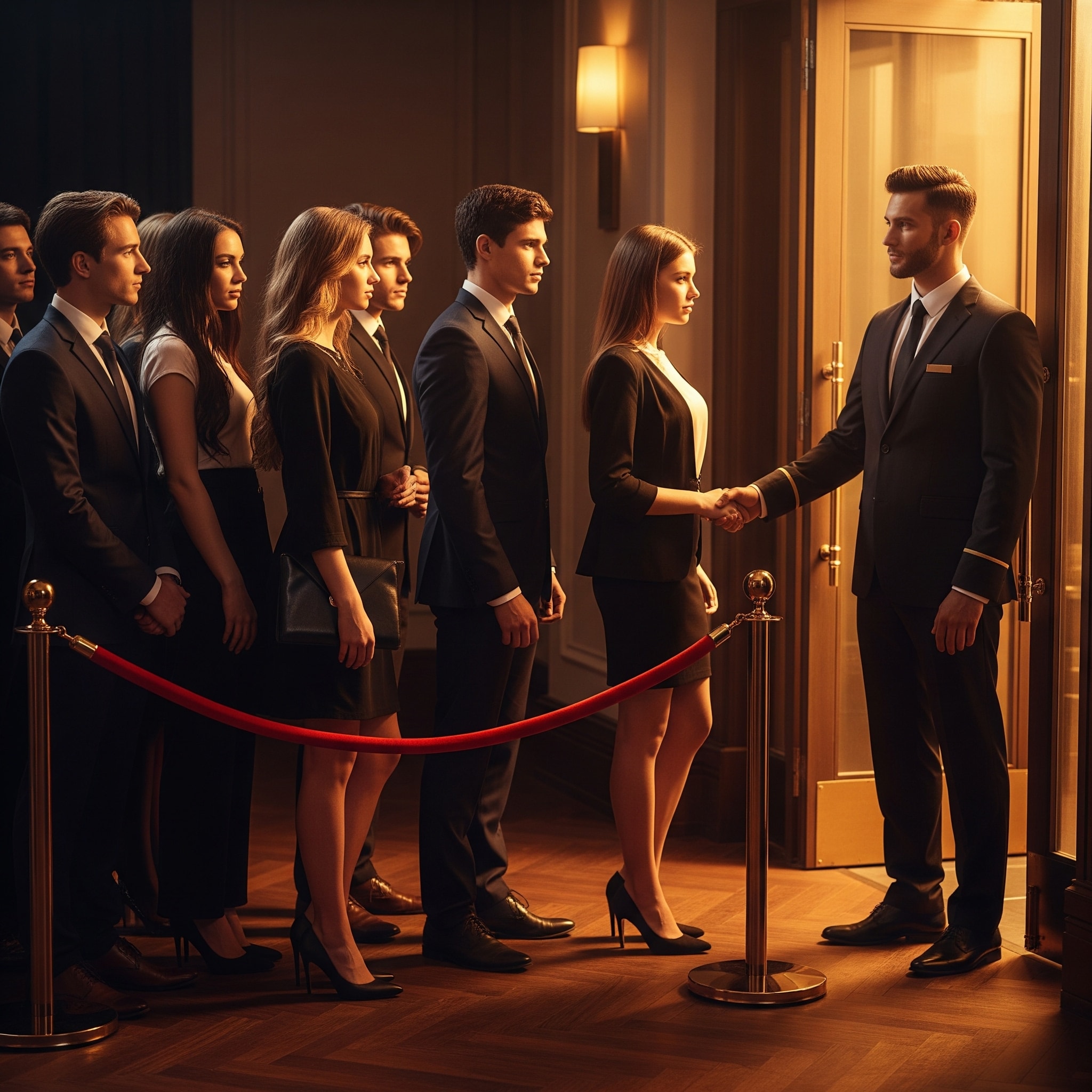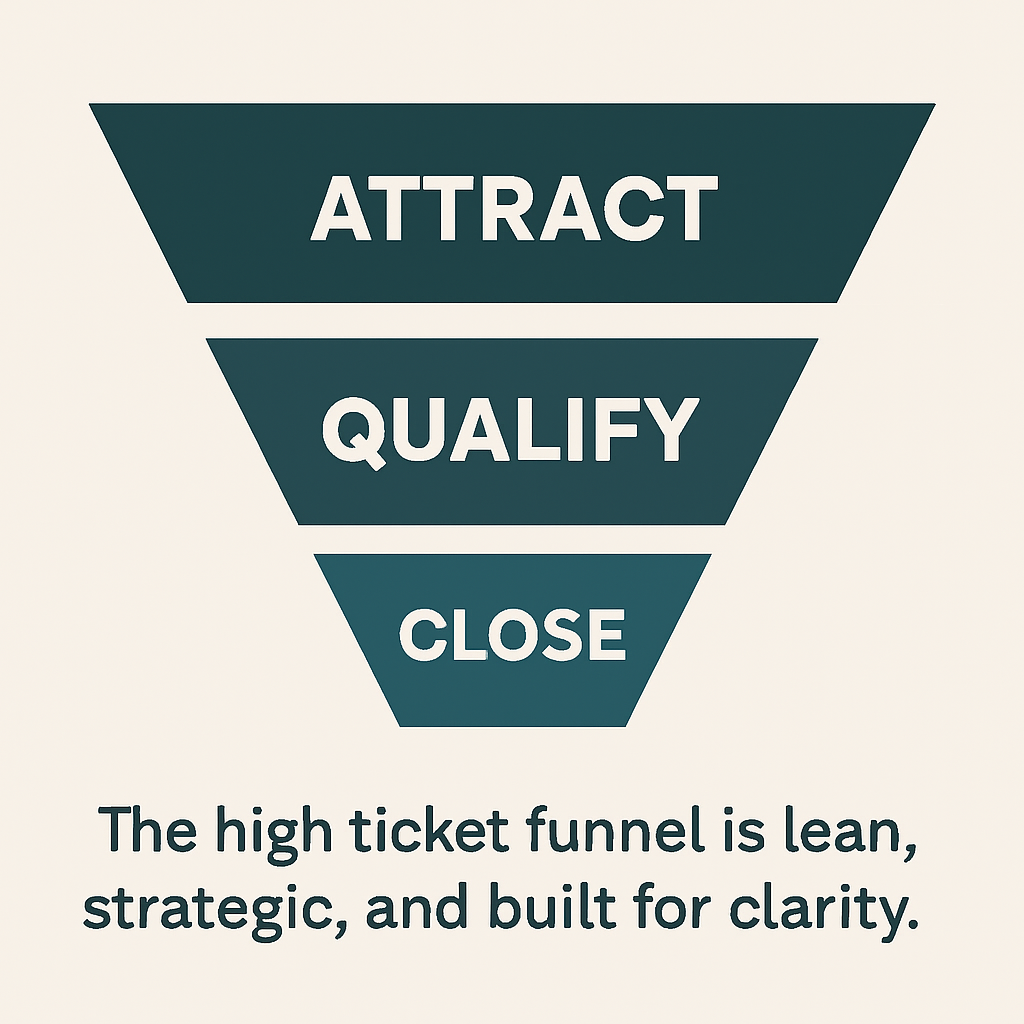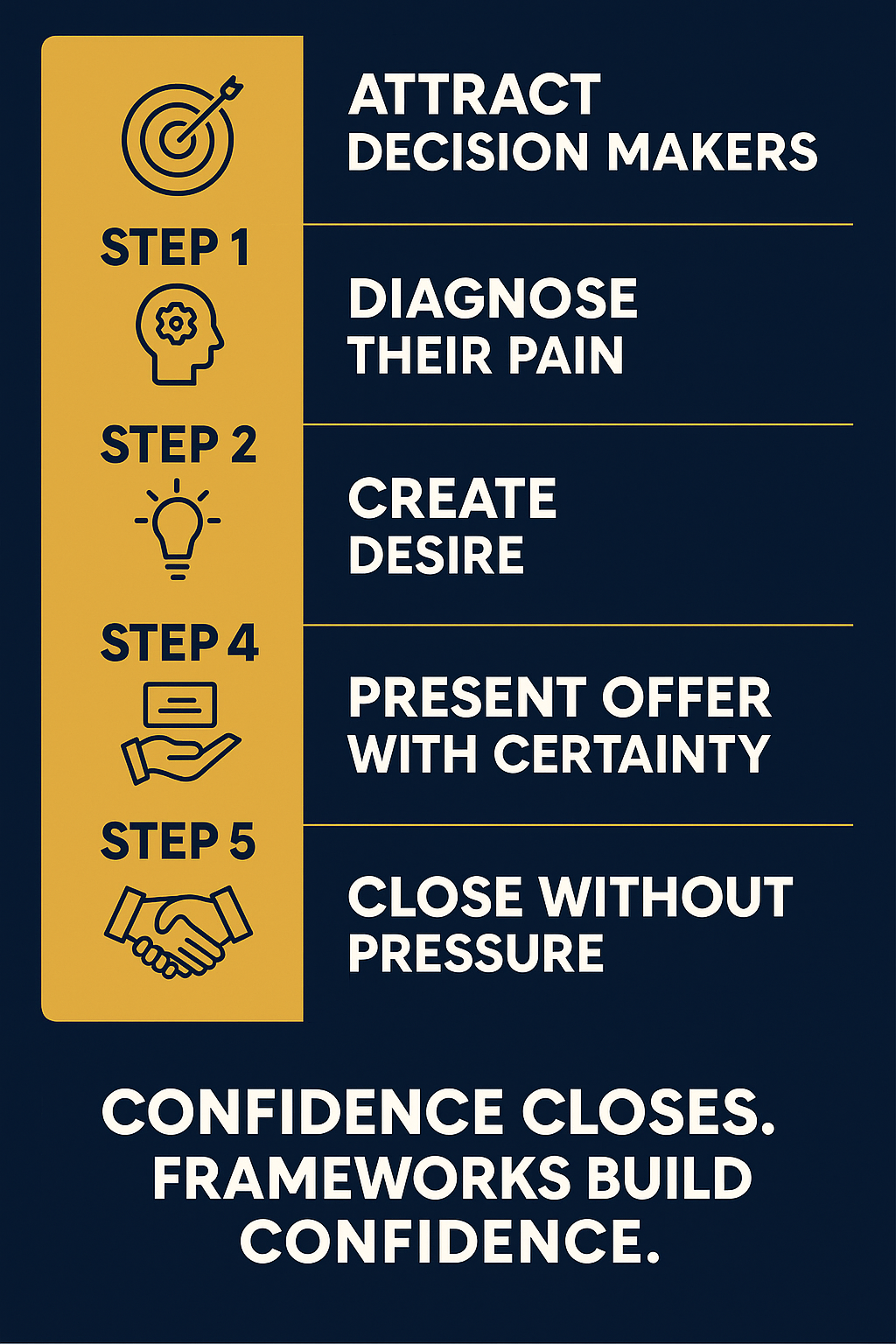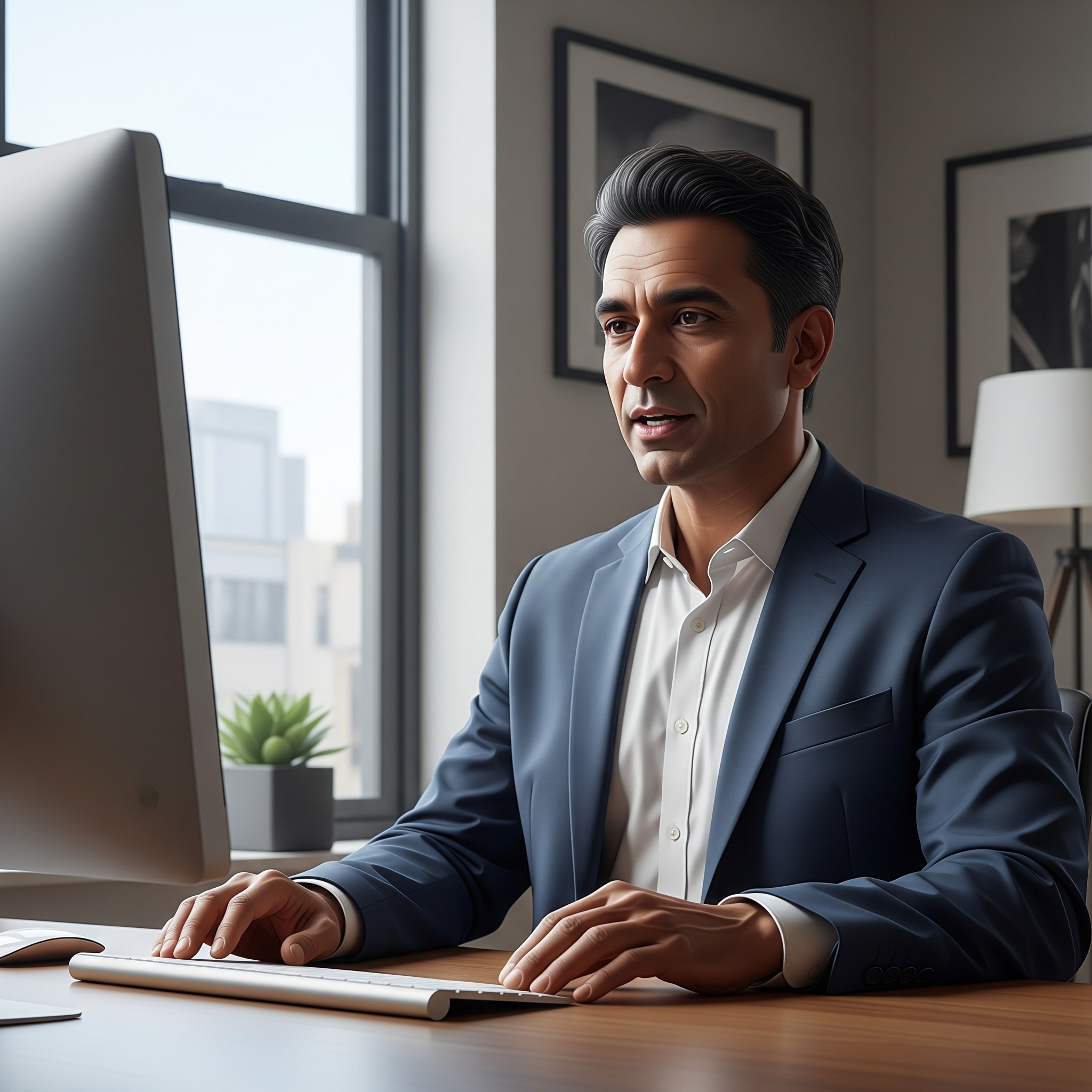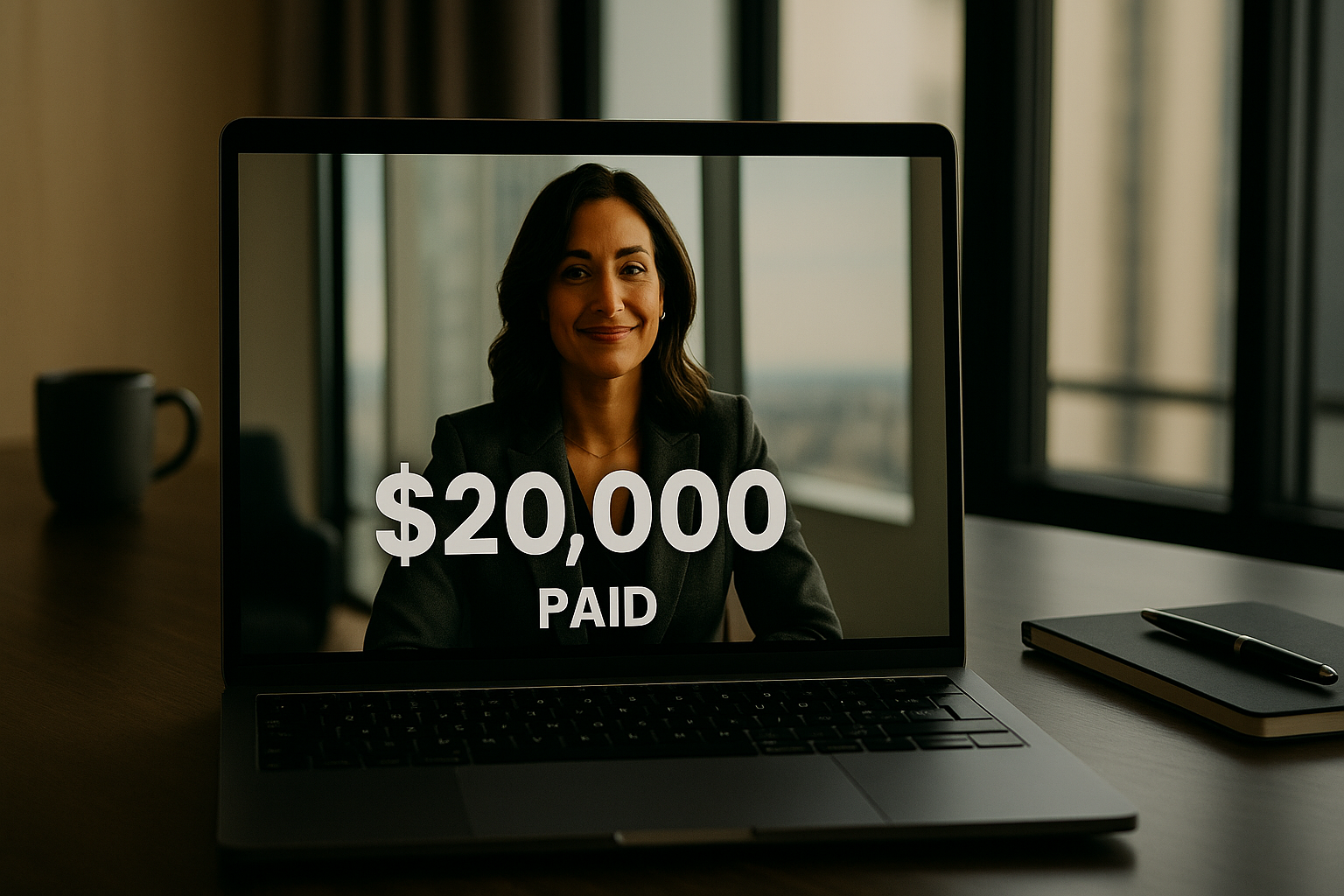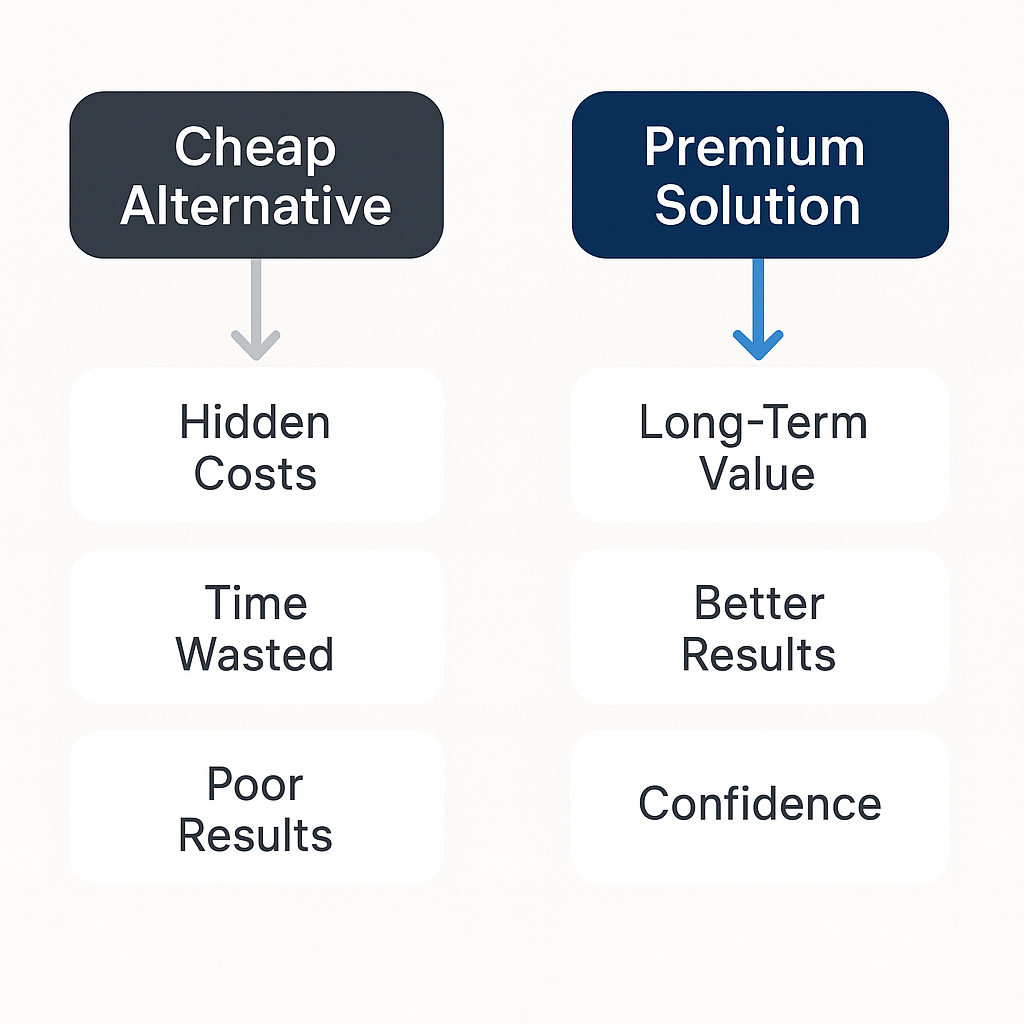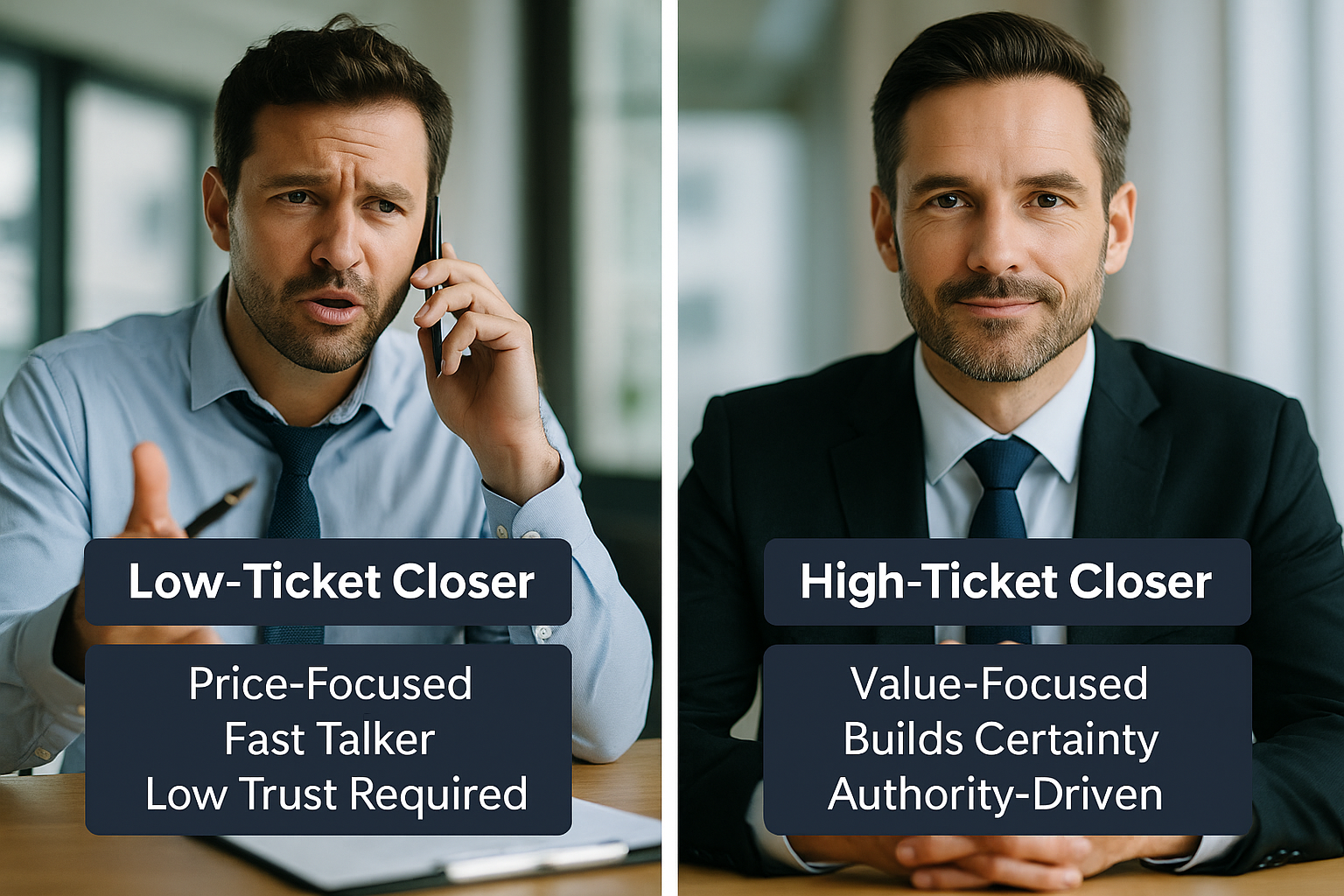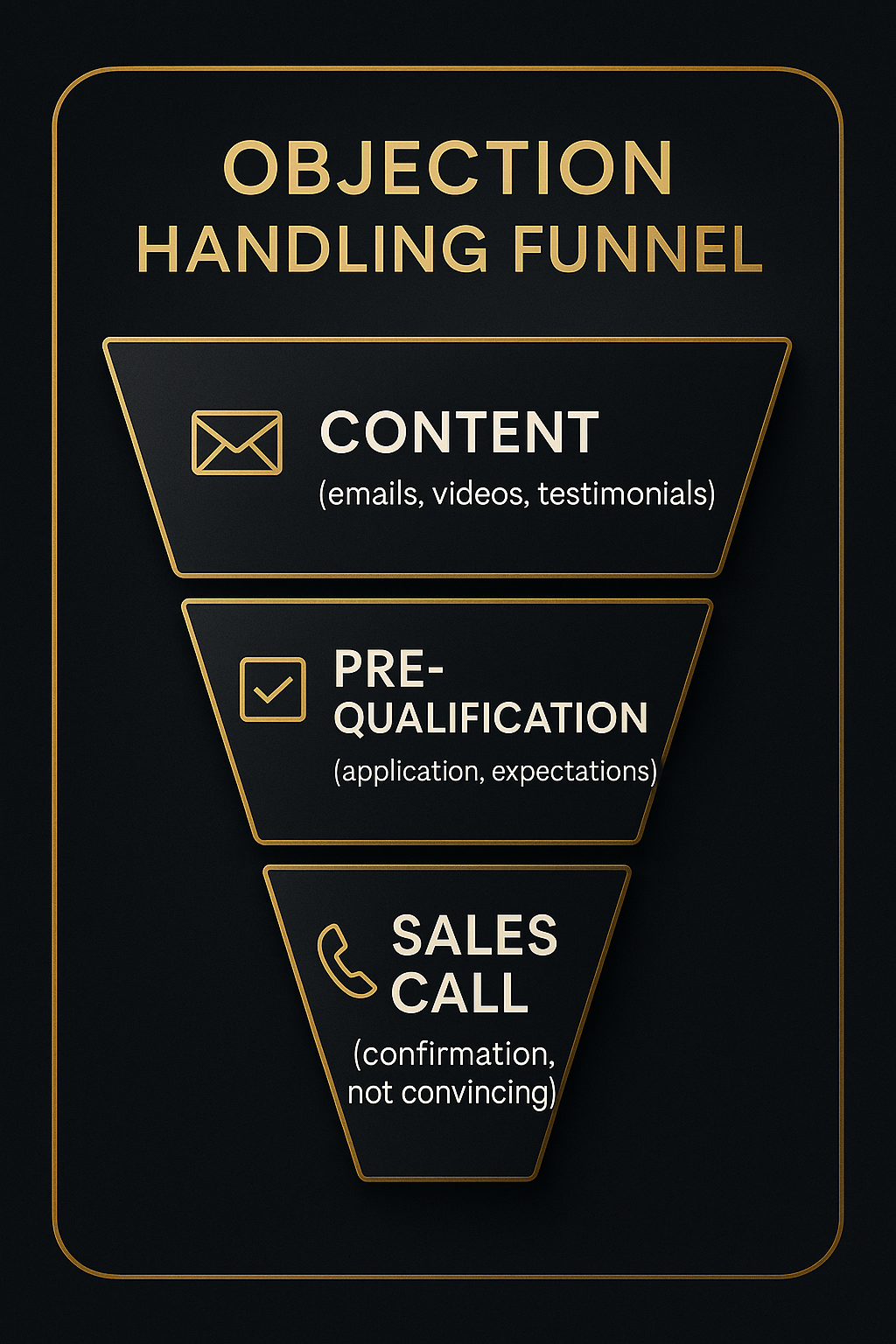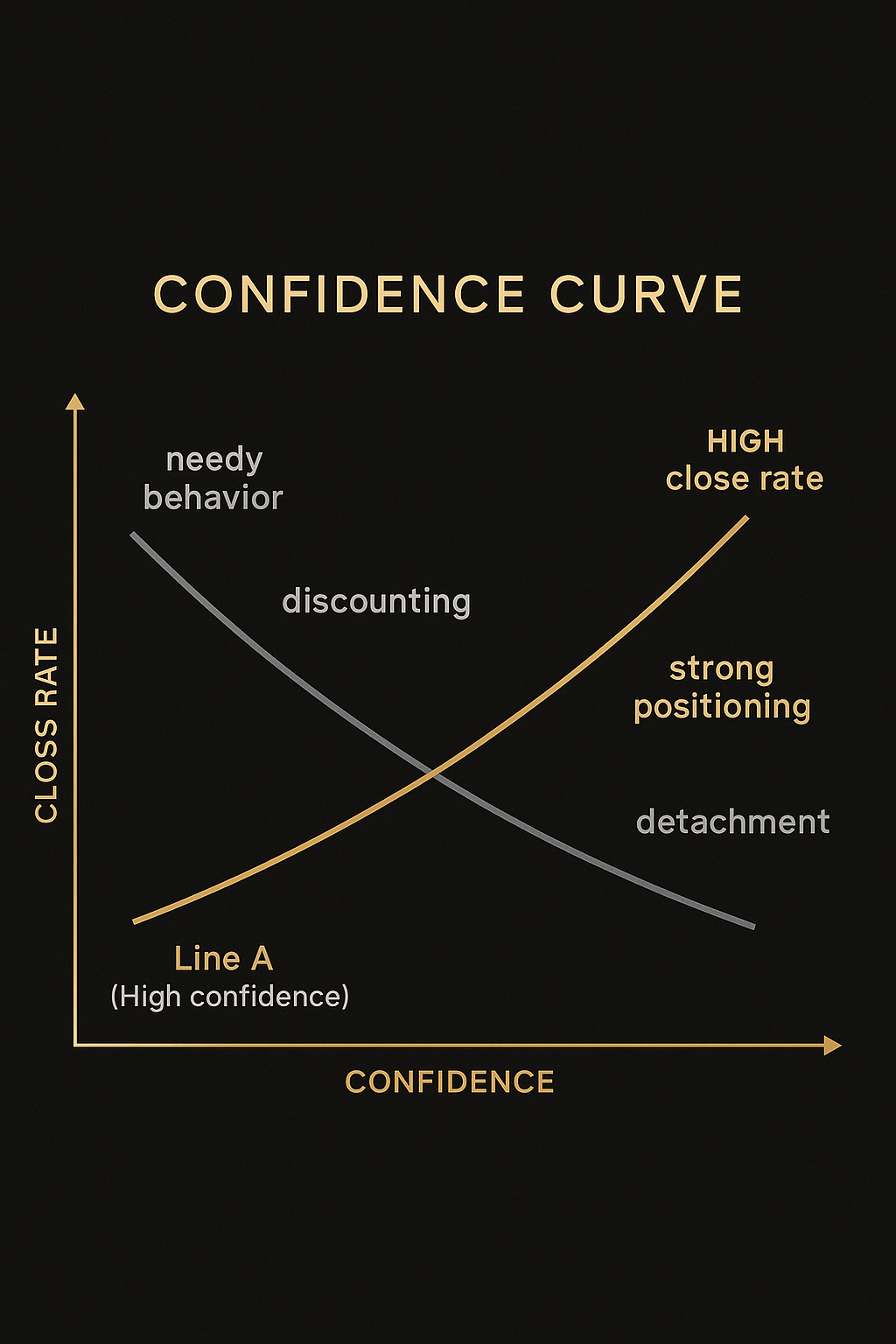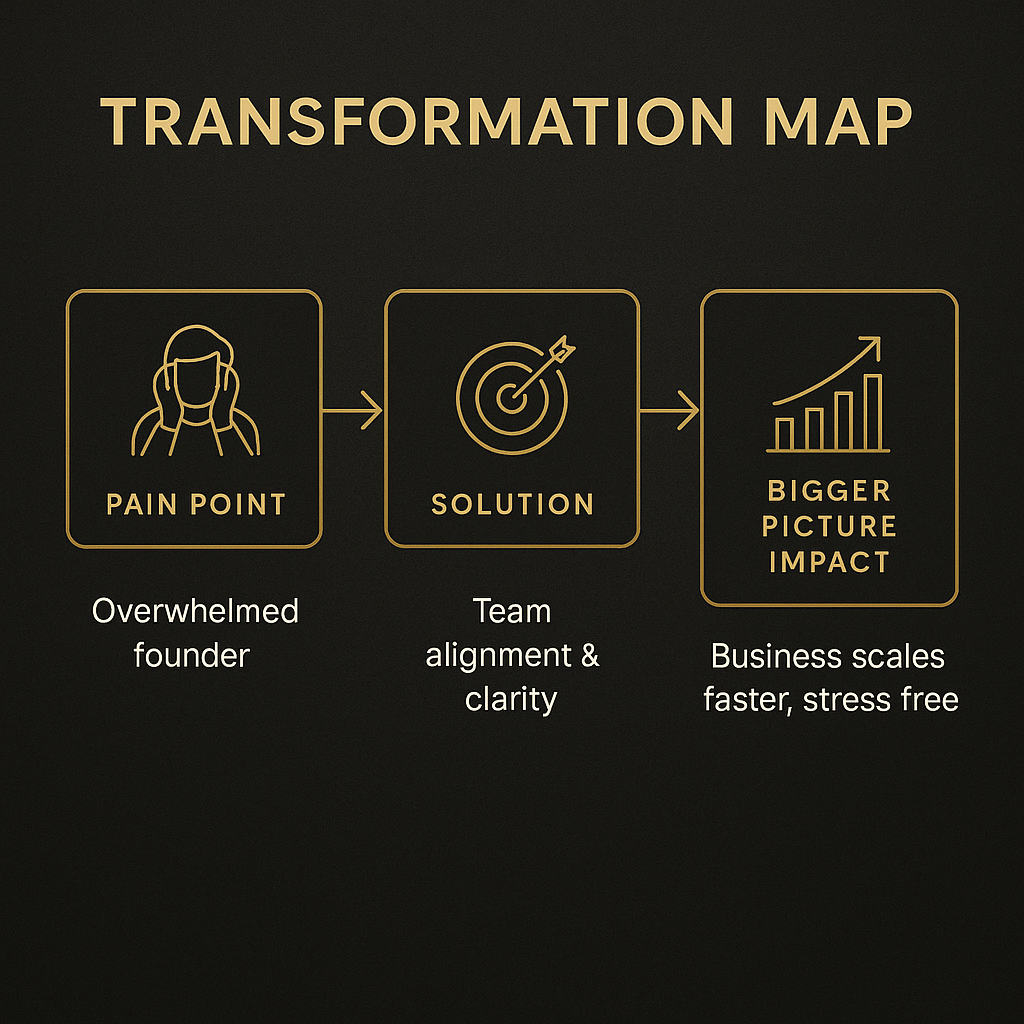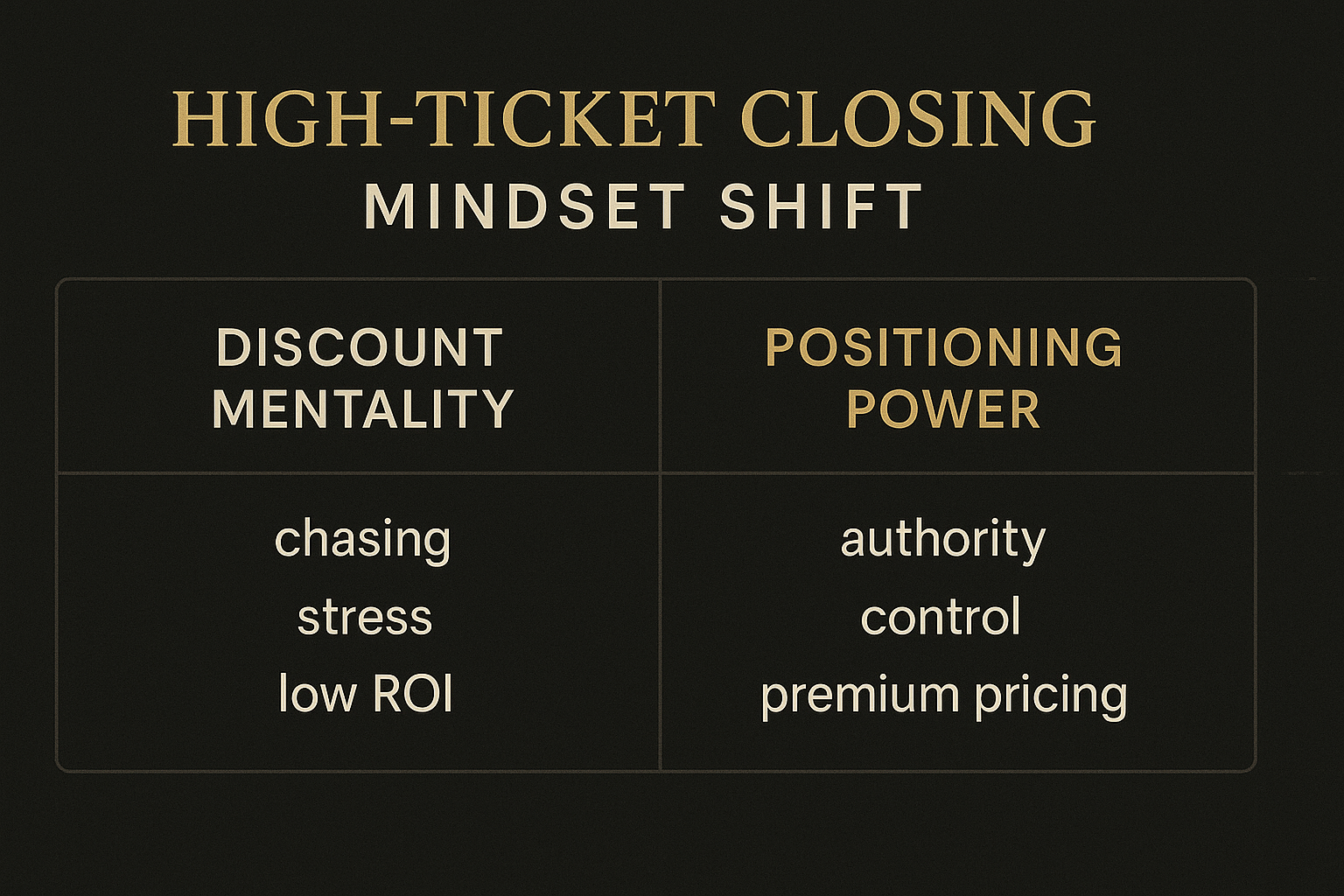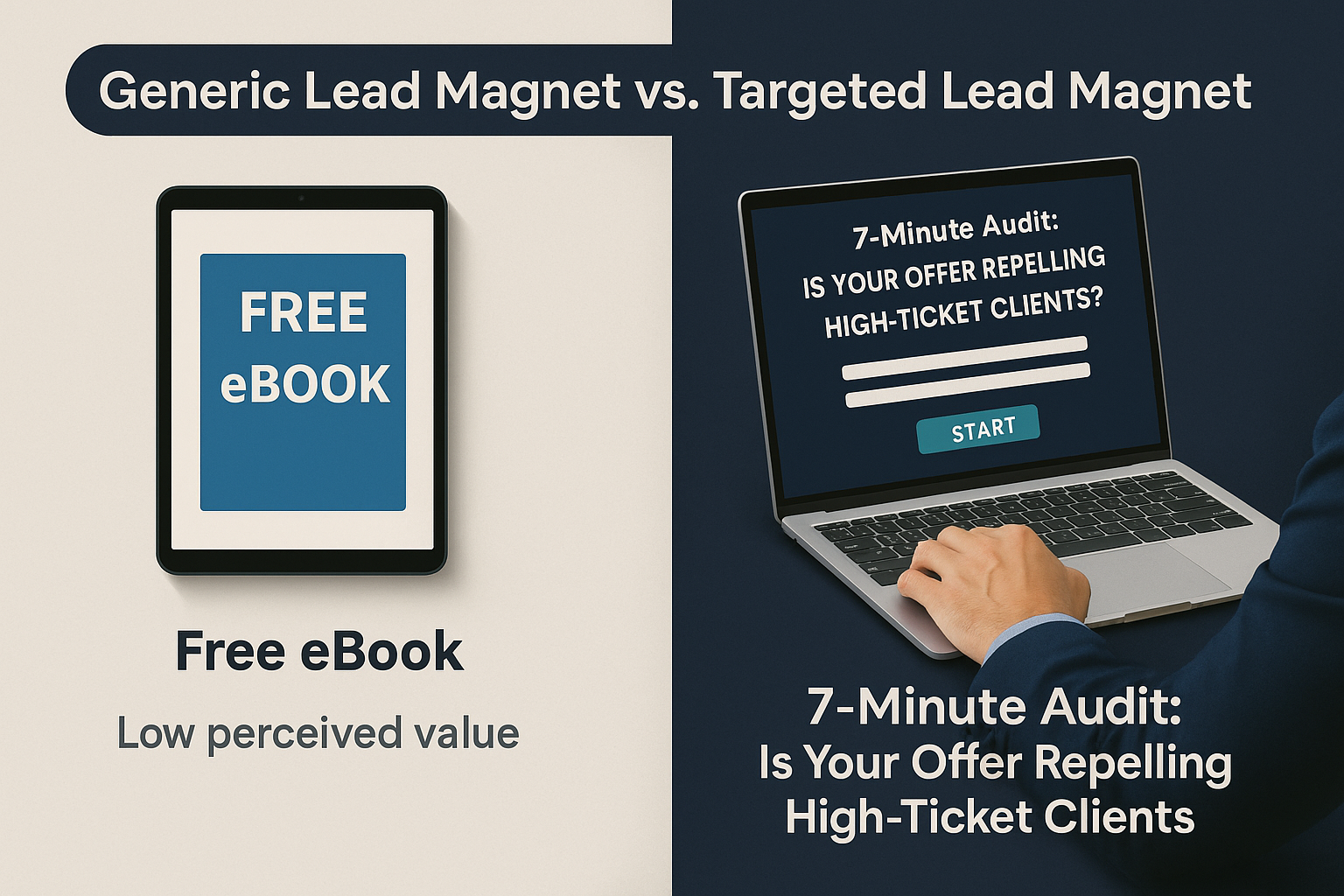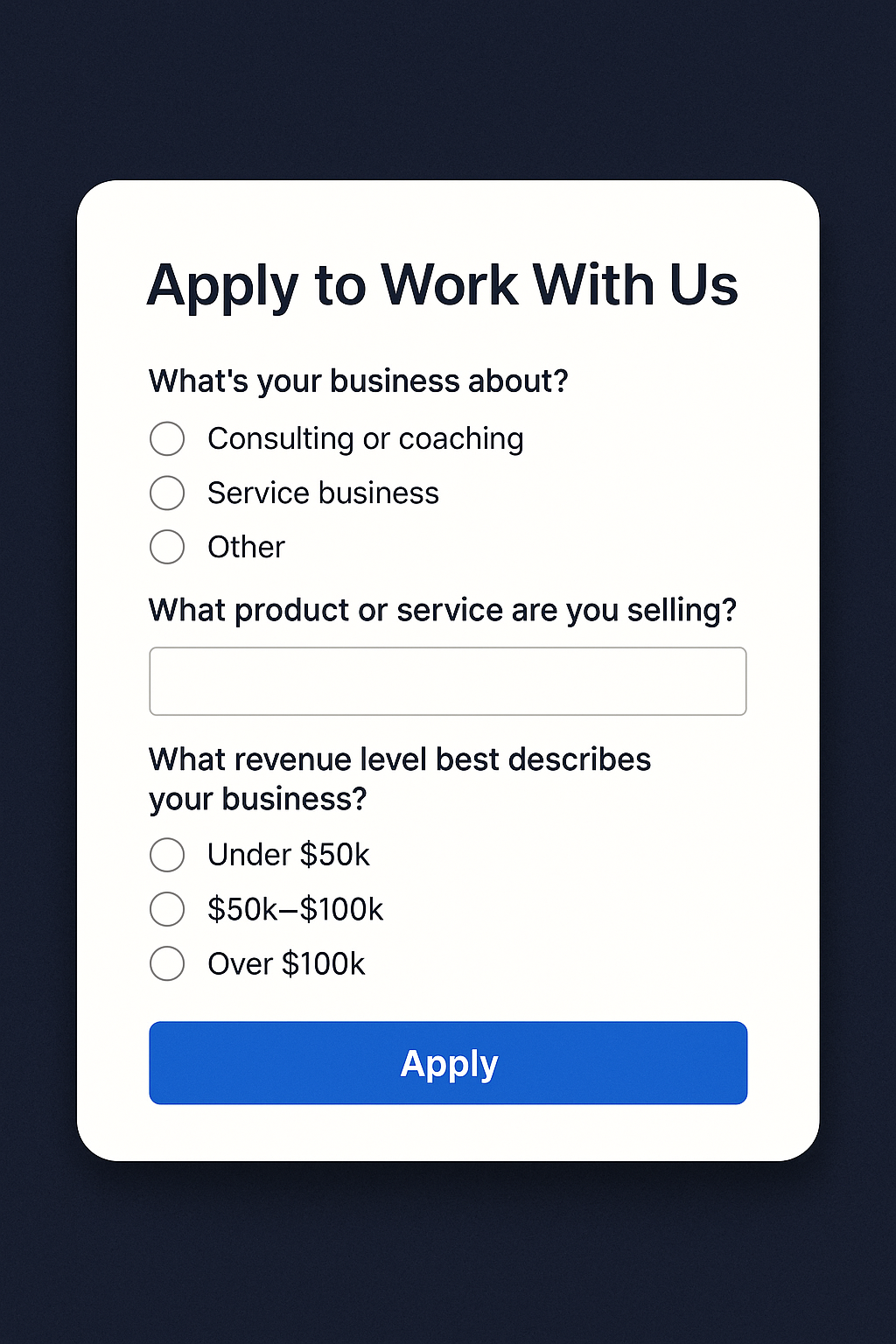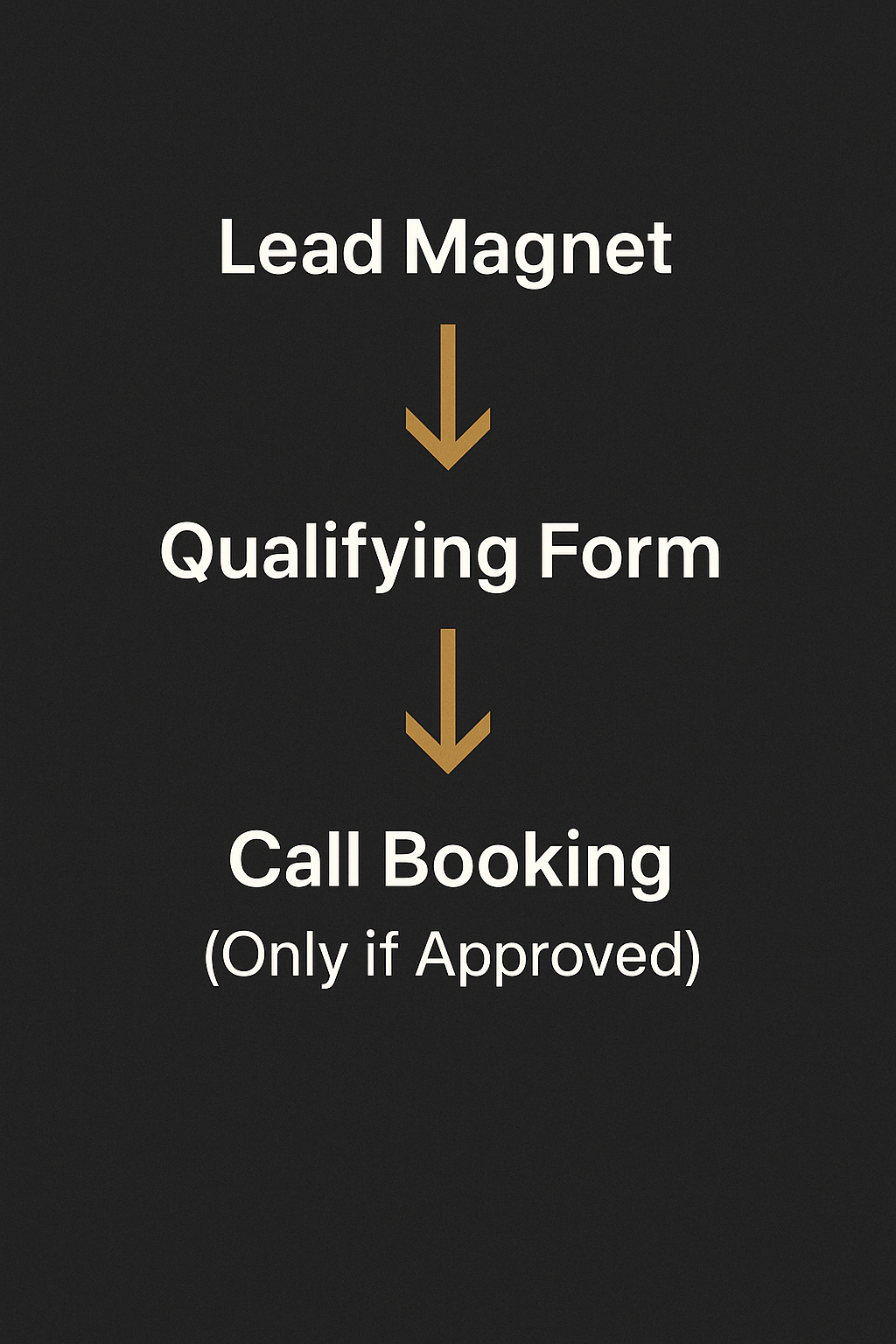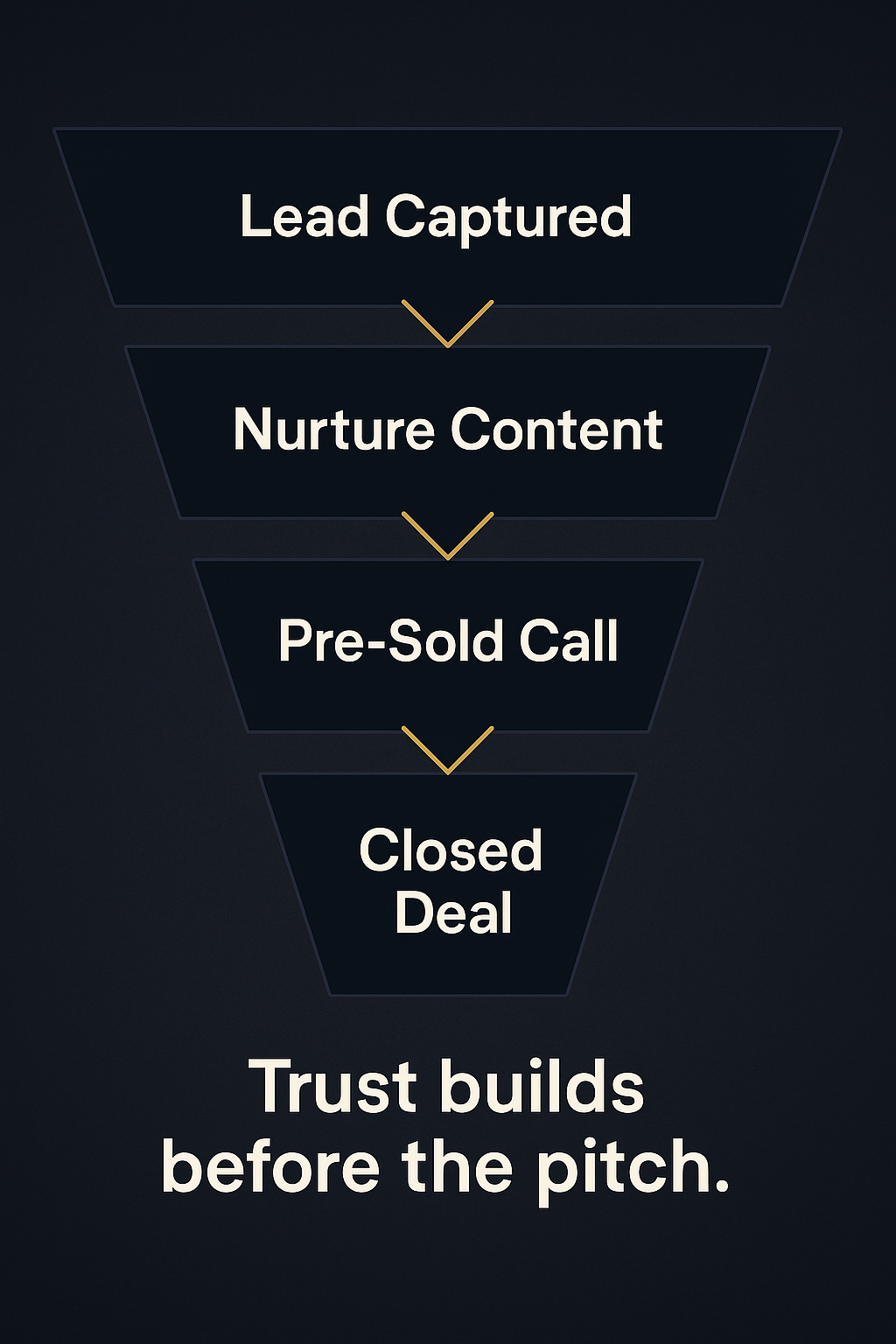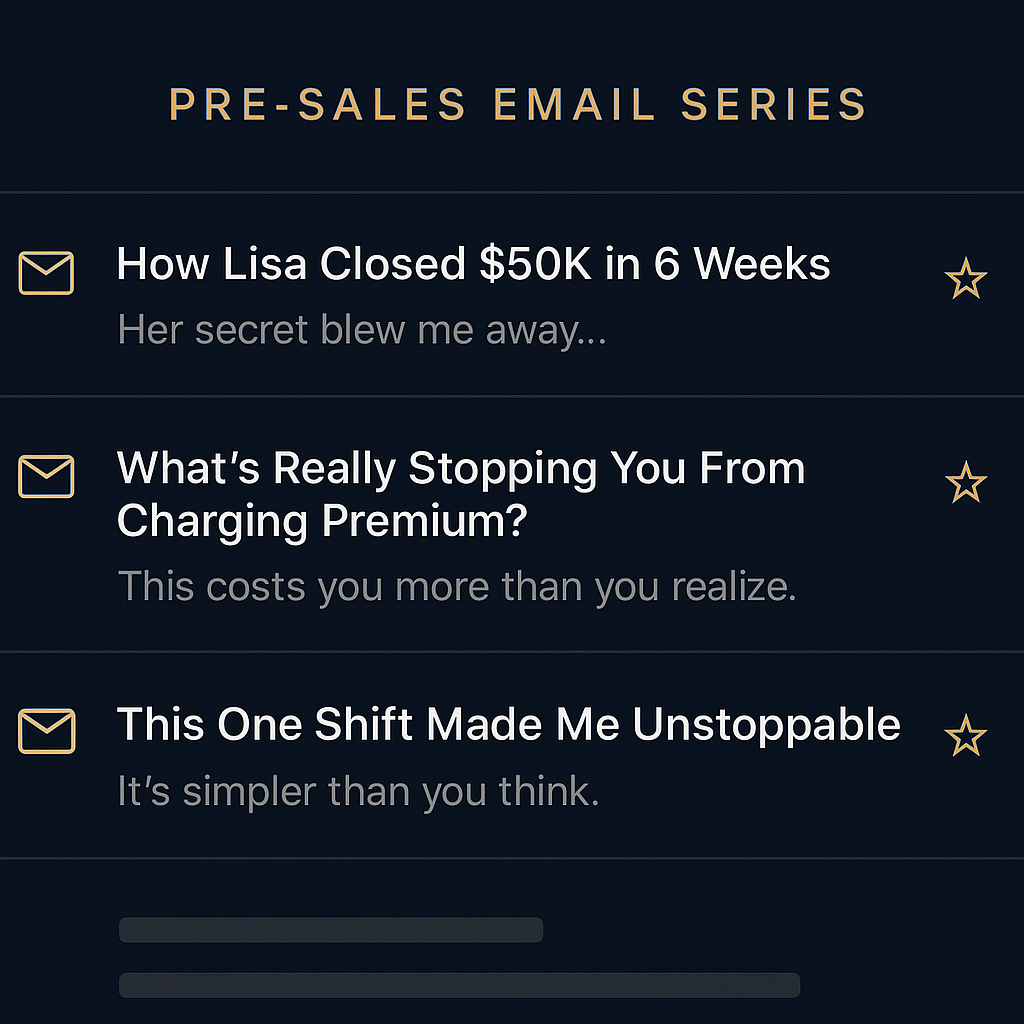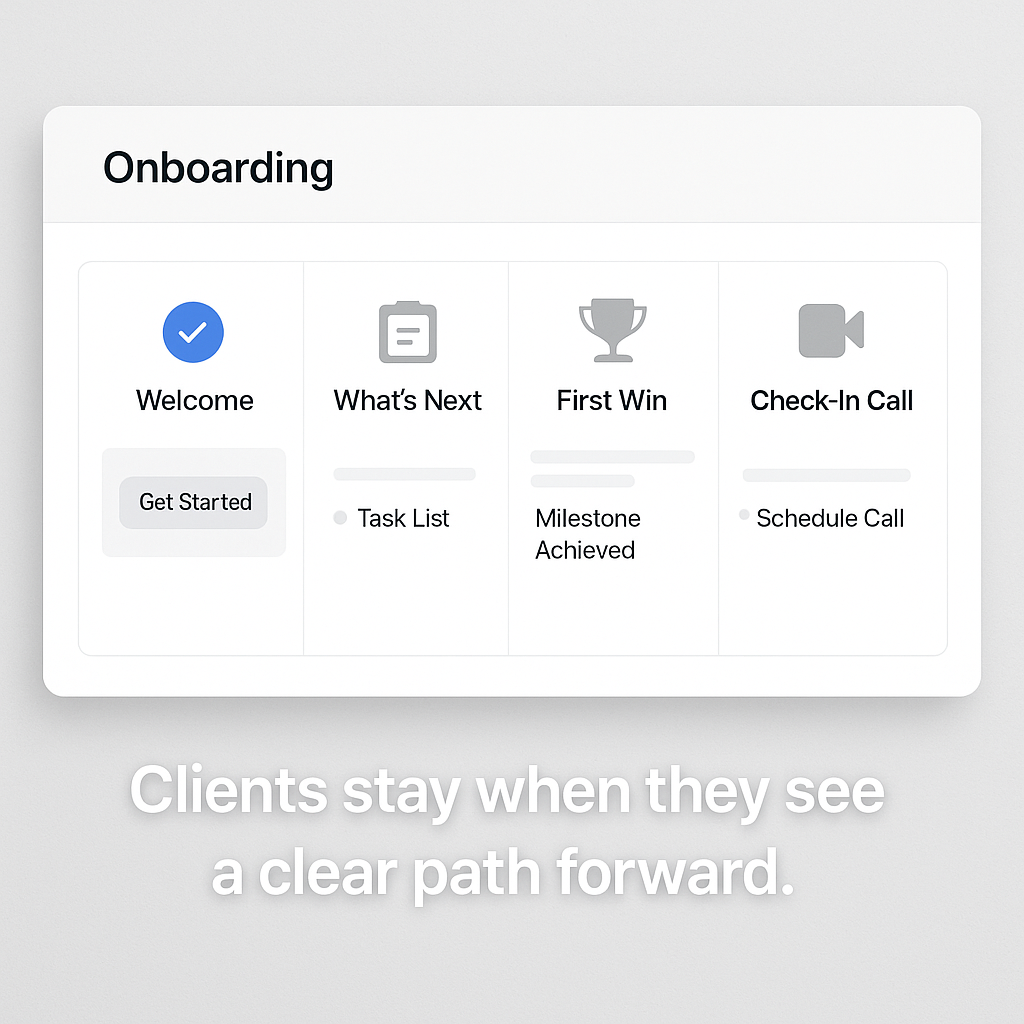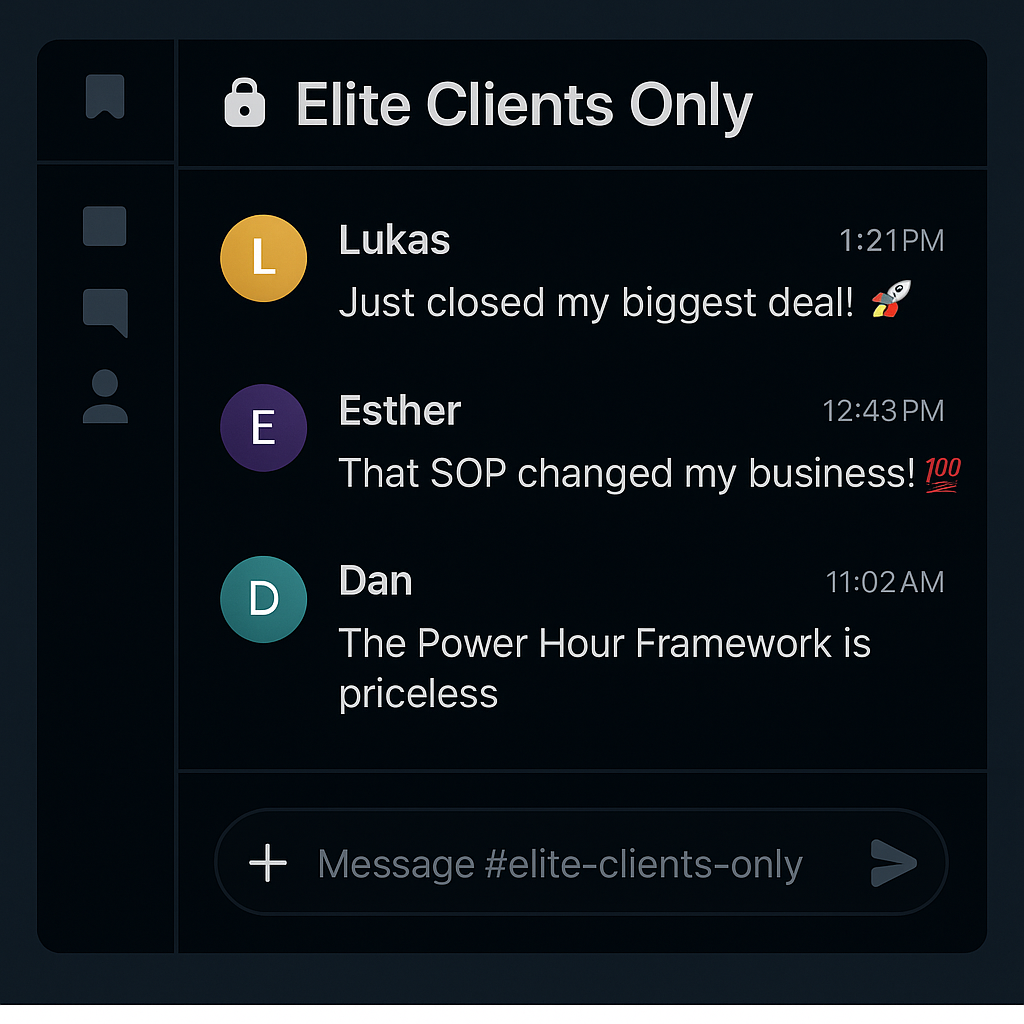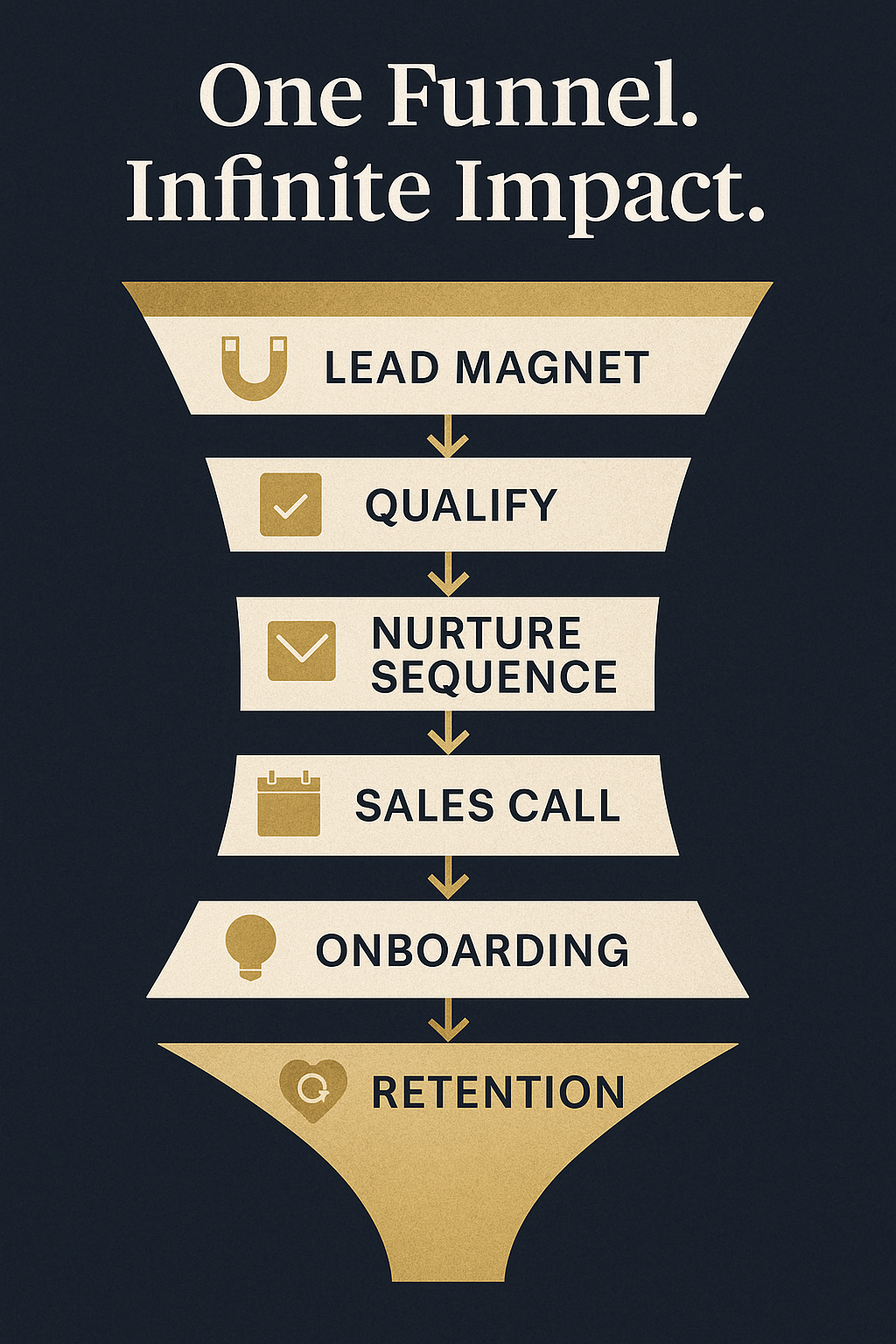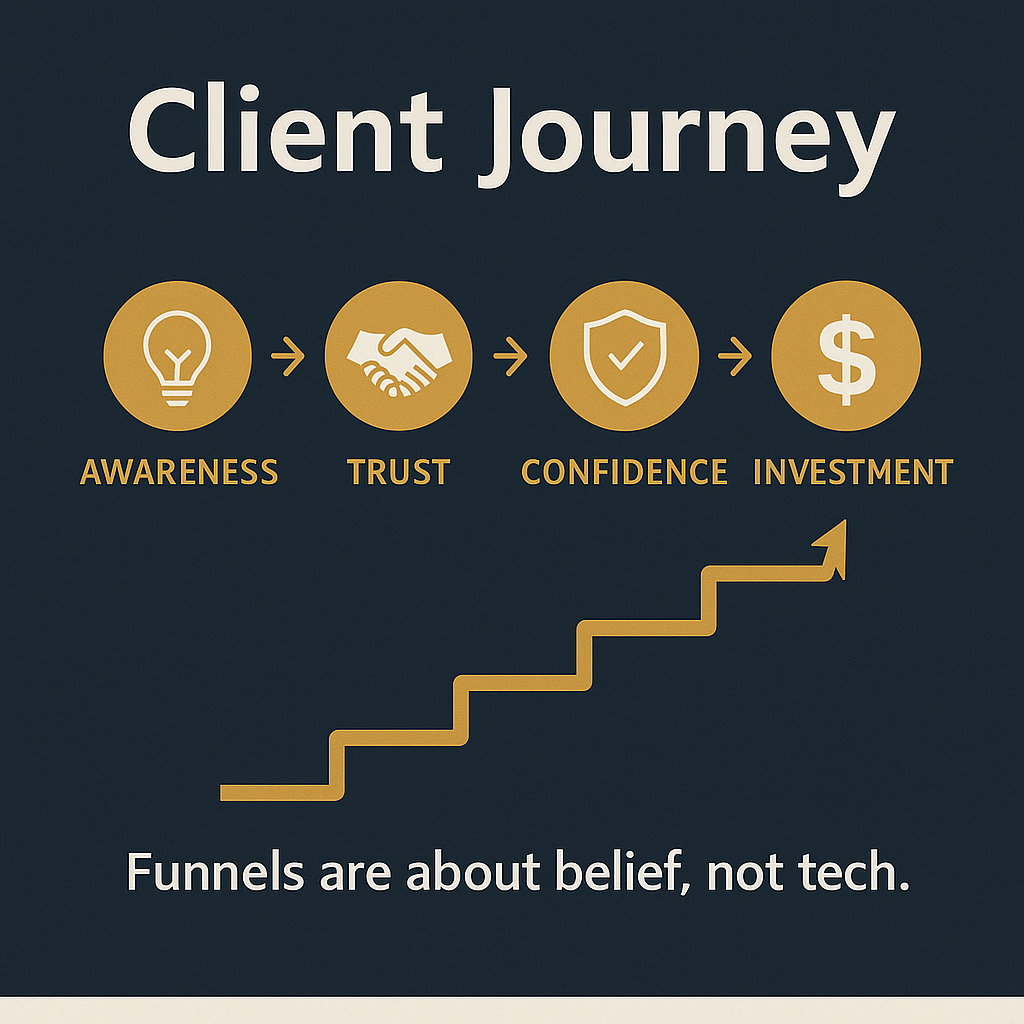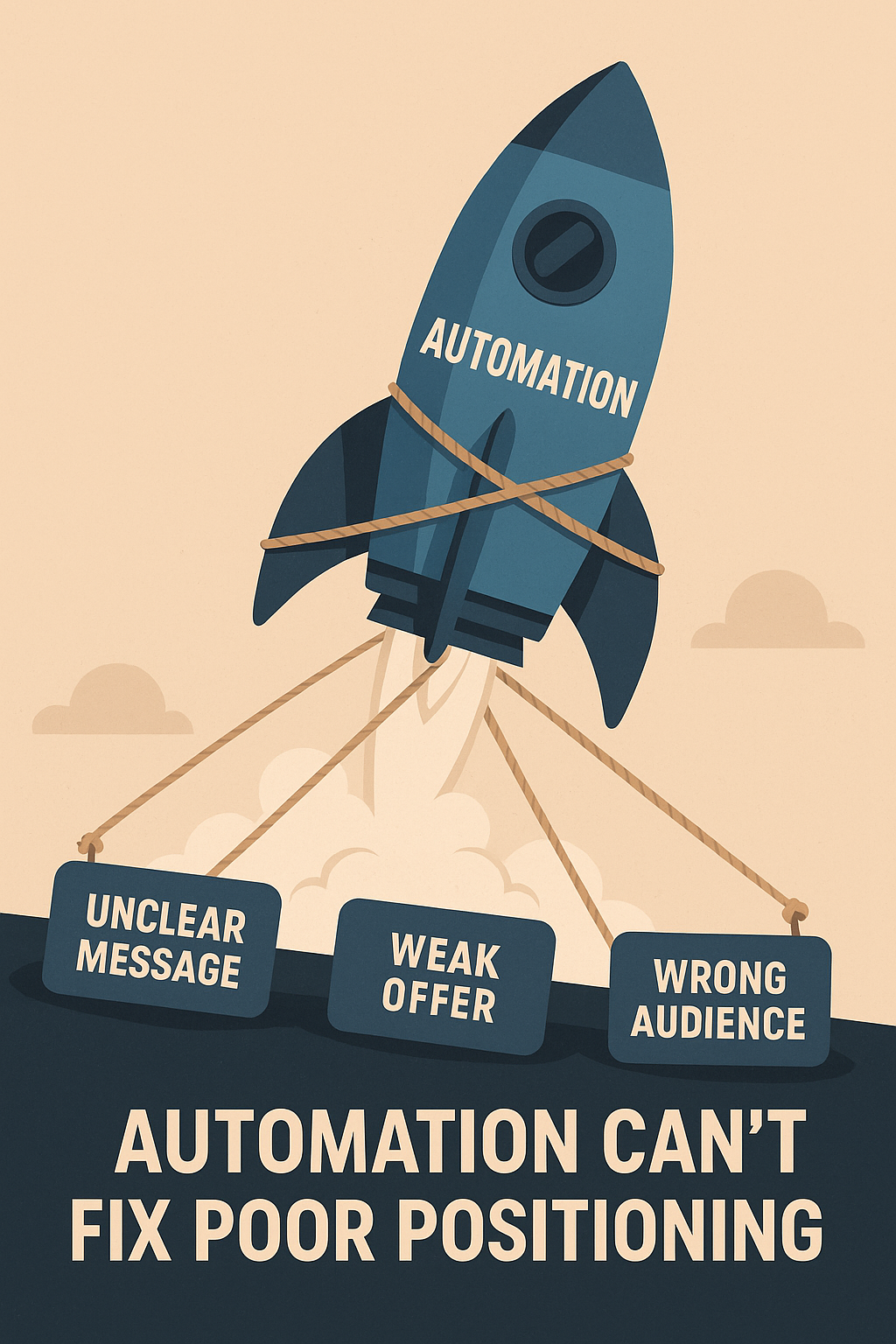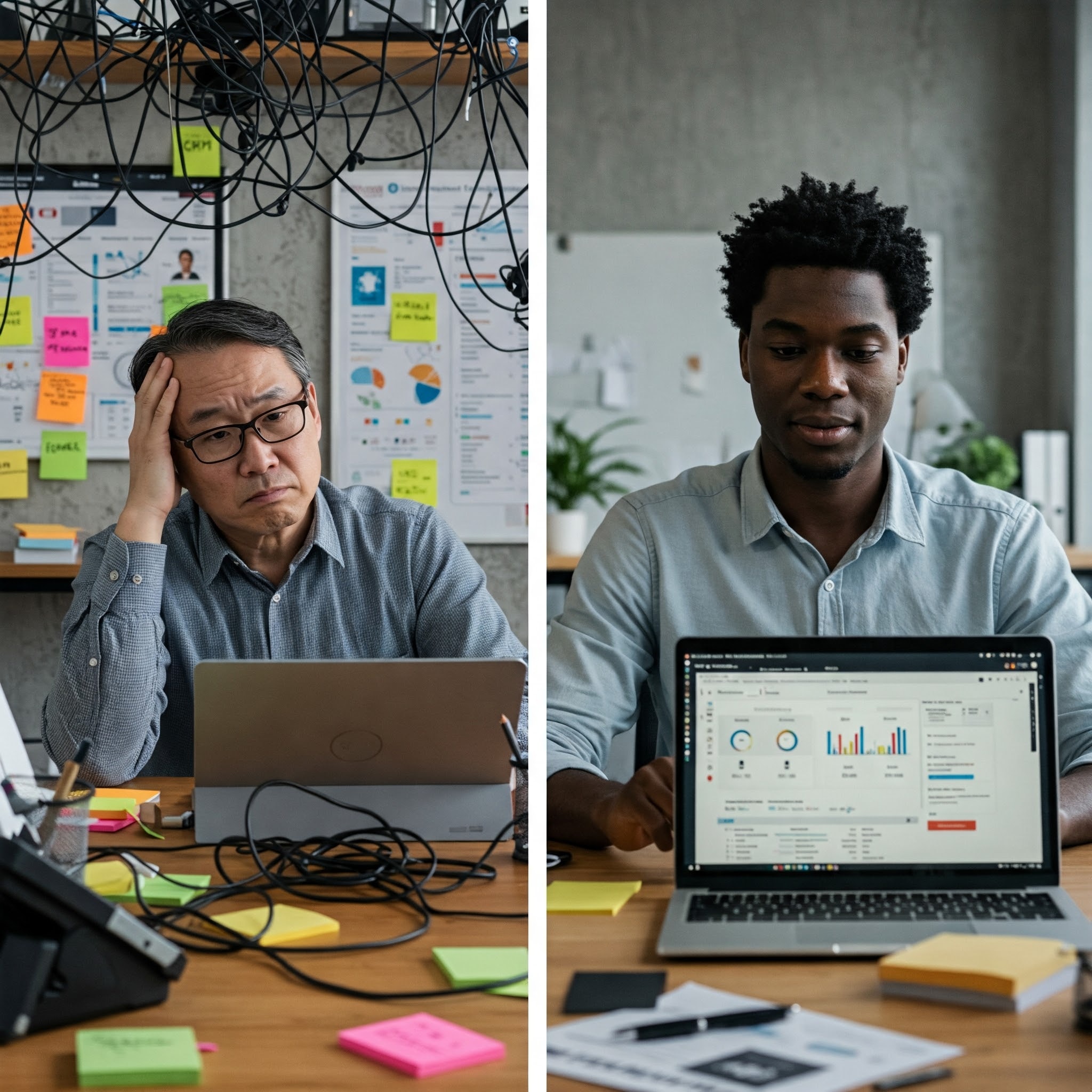Still spending thousands on ads to attract high-ticket clients?
Stop. Right now.
Your best leads don’t come from Facebook ads, Google retargeting, or a funnel you copied from some guru.
They come from people—more specifically, from people who already trust you.
Think about your own behavior. When was the last time you dropped $10K, $25K, or $50K with someone based purely on an ad?
Exactly.
You didn’t.
Because premium buyers don’t chase ads—they respond to referrals.
Table of Contents
- What Is Referral Marketing?
1.1. Referral Marketing Defined (Without the Fluff)
1.2. How Referral Marketing Works in Practice
1.3. Why It Outperforms Paid Marketing Channels - Why Referral Marketing Crushes Traditional Tactics
2.1. Traditional Marketing Is Expensive, Noisy, and Cold
2.2. Referral Marketing Bypasses All That
2.3. The Power of a Trust-Based Marketing Channel - The Psychology Behind Successful Referrals
3.1. People Refer to Reinforce Their Own Status
3.2. Your Clients Want to Look Good—Help Them
3.3. Trust Is Transferred, Not Built - The Dan Lok 3-Part Referral System
4.1. Engineer the Referral Trigger
4.1.1. Make Your Offer Feel Exclusive
4.1.2. Give Clients an Identity to Live Into
4.1.3. Turn Client Wins Into Social Proof Moments
4.2. Make Referring a Status Play (Not a Transaction)
4.2.1. Stop Offering Cash or Discounts
4.2.2. Use the “Red Carpet” Technique
4.3. Remove Every Barrier to Referrals
4.3.1. Tell Clients Exactly Who to Refer
4.3.2. Give Them Pre-Written Scripts
4.3.3. Use a Simple Sharing Link - Real-World Referral Examples & Use Cases
5.1. Case Study #1: The Consultant Who Replaced Paid Ads With Referrals
5.2. Case Study #2: The Coach Who Built a “Referral Engine”
5.3. Quick Wins You Can Steal - How to Launch a Referral Program That Converts
6.1. Step 1: Choose the Right Referral Model
6.2. Step 2: Build the Referral Program Page
6.3. Step 3: Time Your Ask (And Make It Easy)
6.4. Step 4: Track, Optimize, and Celebrate - Referral Tools, Software, and Automation
7.1. Referral Software That Actually Works
7.2. Integrating With Your CRM and Automation Stack
7.3. Bonus Tools to Supercharge Your Referral Program - Scaling Word-of-Mouth in a Digital World
8.1. 1. Activate Private Communities and Peer Circles
8.2. 2. Leverage Content to Spark Referrals
8.3. 3. Turn Live Events and Webinars Into Referral Engines
8.4. 4. Dominate Online Forums and Niche Spaces - Avoid These Referral Marketing Mistakes
9.1. Mistake #1: Making It All About the Money
9.2. Mistake #2: Not Telling Clients Who to Refer
9.3. Mistake #3: Asking at the Wrong Time
9.4. Mistake #4: Making It Complicated
9.5. Mistake #5: Failing to Acknowledge and Celebrate - Turn Referrals Into Your #1 Growth Engine
- Want Referrals That Close Themselves? Start Here.
Why Referrals Win in a Crowded Market
We live in a world saturated with “me too” marketing:
Every offer sounds the same. Every testimonial feels staged. Every “limited time only” deal resets tomorrow.
In this kind of environment, trust is the real currency.
And trust doesn’t come from ads—it comes from relationships.
Referral marketing works because it taps into social proof, loyalty, and status.
Instead of burning cash on cold outreach, you leverage your most loyal customers, your brand advocates, and even your family members or professional network to grow your business organically.

But Here’s the Catch…
Referral marketing doesn’t just “happen.”
You can’t hope for a client to say, “Hey, I told my friend about you.”
You have to engineer the entire referral process.
And if you do it right, you’ll have high-ticket clients lining up to work with you—without ever running another ad again.
In this ultimate guide, you’ll learn:
- Why traditional marketing is failing premium businesses
- How to design a referral strategy that attracts pre-sold, price-immune clients
- What referral rewards actually work in high-ticket spaces (and what backfires)
- How to build a referral marketing program that runs on autopilot—without feeling transactional
Let’s dive in.

What Is Referral Marketing?
If you’ve ever recommended a restaurant to a friend or told a colleague about a great service provider, you’ve already participated in referral marketing.
It’s not new.
But for entrepreneurs and coaches selling high-ticket offers, referral marketing isn’t just a growth tactic—it’s the ultimate shortcut to trust.
Referral Marketing Defined (Without the Fluff)
At its core, referral marketing is a strategy that turns existing customers into a sales force.
Instead of pouring money into ads, you tap into the trust your happy clients have already built with their peers, colleagues, and even family members.
You don’t “market” your business—your clients do it for you.
And the best part?
Referred leads are usually:
- More qualified
- Easier to close
- Less price sensitive
- More loyal over time
How Referral Marketing Works in Practice
Imagine this:
You just helped a client scale to $100K/month. They’re thrilled. You ask them to “refer a friend,” and they do. But it’s not just a friend—it’s a business peer in their network who also wants to scale.
Boom. You’ve got a warm, high-trust lead who already believes in your value before you ever speak to them.
That’s how referral marketing work—and why it’s so powerful.
Now multiply that by every happy customer you’ve worked with.
That’s your hidden referral network, just waiting to be activated.
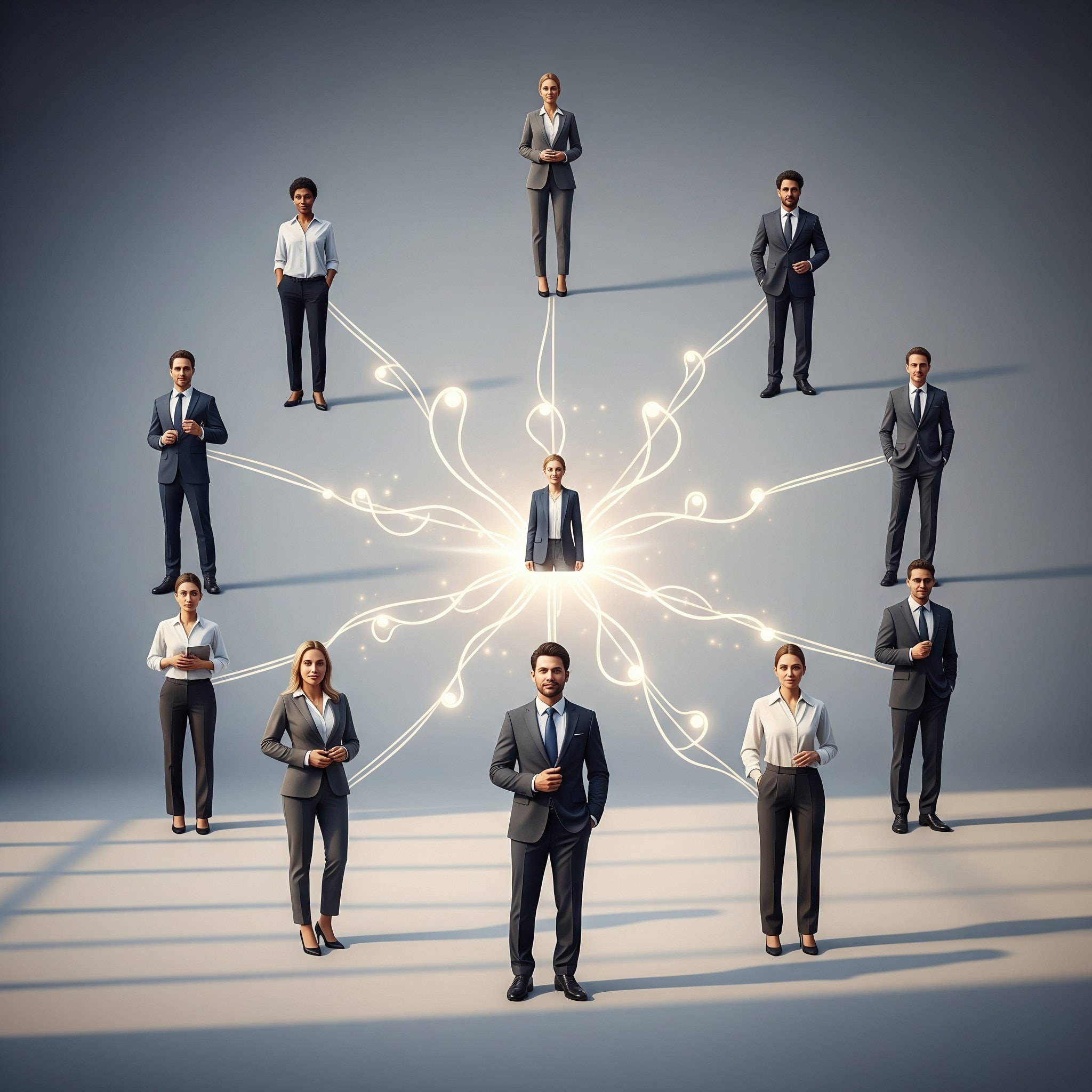
Why It Outperforms Paid Marketing Channels
Most cold leads from ads don’t convert because they’re skeptical. They don’t know you, your track record, or your value.
But a referred customer already sees you through the lens of someone they trust.
It’s the difference between walking into a stranger’s pitch… versus being personally invited into an exclusive circle.
And this applies whether you’re running:
- A coaching business
- A consulting agency
- A mastermind
- A SaaS or service-based offer
Referral marketing is industry-agnostic—and yet, most businesses never build a true referral strategy.
They just hope. Or worse… beg.
Let’s fix that.
Why Referral Marketing Crushes Traditional Tactics
If you’re still trying to scale your premium offer with Facebook ads, cold emails, or cookie-cutter funnels, you’re already at a disadvantage.
In today’s crowded market, buyers aren’t just overwhelmed—they’re skeptical.
Everyone’s promising results.
Everyone’s got screenshots and testimonials.
And everyone sounds the same.
But there’s one thing your competition can’t fake:
A genuine referral from a trusted source.
Traditional Marketing Is Expensive, Noisy, and Cold
Let’s break it down.
- Ads are expensive—and only getting pricier.
- Cold outreach takes time, burns your team, and annoys prospects.
- Funnels convert at sub-2% for most service businesses (if that).
- Organic content is a long game (and even then, trust is slow to build).
What’s worse? Most of these channels target people who:
- Don’t know you
- Don’t trust you
- And weren’t even looking for your solution

Referral Marketing Bypasses All That
With a strong referral marketing strategy, you flip the script:
- You’re not pitching strangers—you’re receiving warm introductions because you position yourself as an expert authority.
- Your clients are pre-framing you as the expert.
- Prospects show up already trusting you.
- And best of all? You’re not paying per click—you’re building a cost-effective, self-reinforcing system.
Think of it as the difference between a billboard on the highway…
And a whisper in the right ear from someone they already admire.
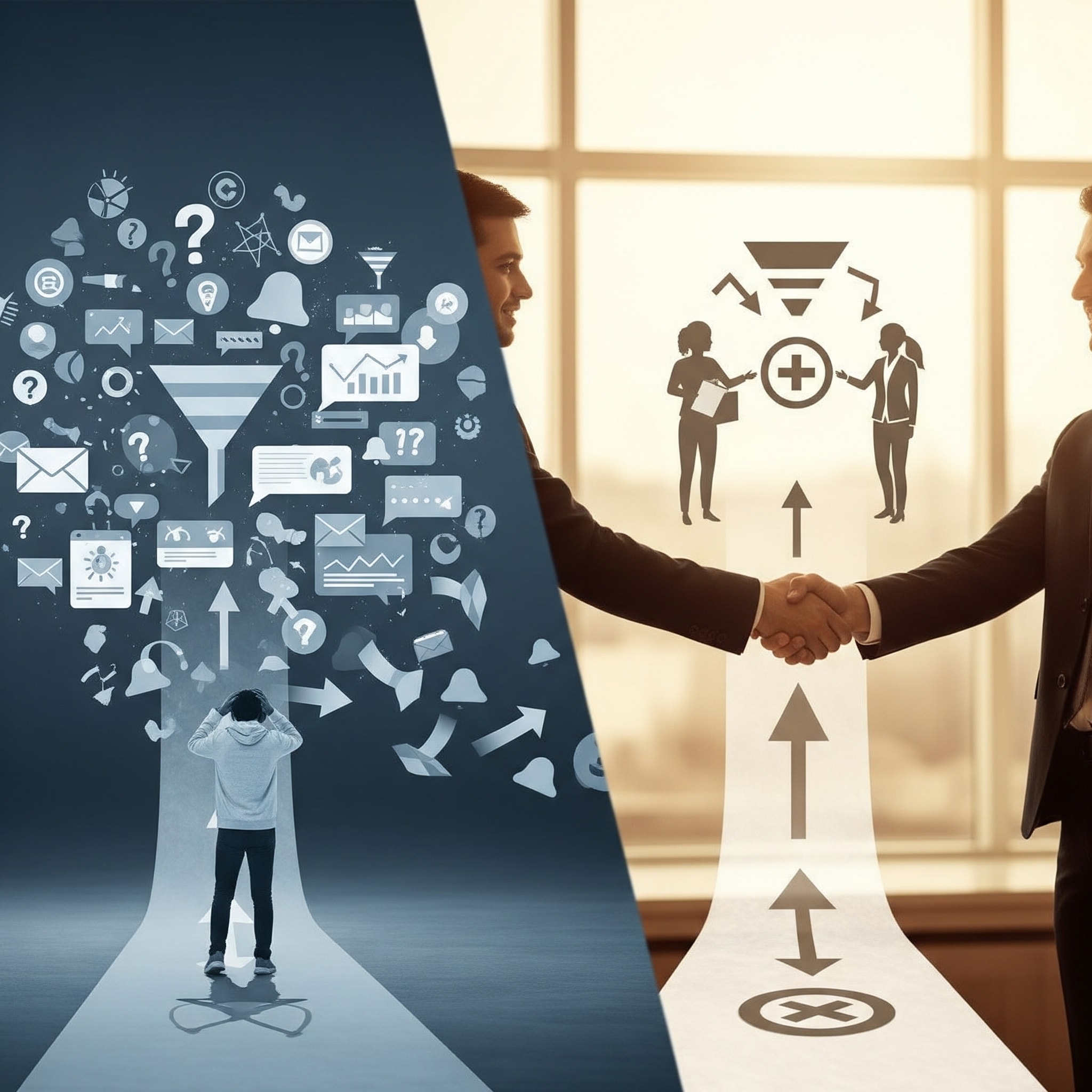
The Power of a Trust-Based Marketing Channel
Trust isn’t just a “nice to have.”
It’s a multiplier. For more on how to make your offer look more trustworthy, see these key strategies.
Studies show that referred customers convert up to 4x faster, spend more, and stay longer. Why? Because their trust wasn’t earned through a sales pitch. It was transferred.
That’s what word of mouth strategy unlocks:
- High retention
- Faster close times
- Fewer objections
- More qualified leads
In short, a better ROI than almost any paid channel.
And in the high-ticket world, where relationships matter more than impressions, that trust is priceless.

So why keep wasting money on ads when your clients could be your best marketers?
Let’s show you how to activate them.
The Psychology Behind Successful Referrals
You can’t force a referral.
But you can engineer one—if you understand the psychology behind why people refer in the first place.
Most business owners assume clients refer because they liked the service.
That’s part of it. But it’s not the full story.
High-value referrals aren’t just about satisfaction.
They’re about identity, status, and social proof.
People Refer to Reinforce Their Own Status
Referrals are never neutral.
Every time someone makes a recommendation, they’re putting their reputation on the line.
And they’re asking themselves subconsciously:
“Will this make me look smarter? More connected? More successful?”
That’s why average referral programs—ones that throw out a $50 coupon or a generic “refer a friend” link—fall flat.
But a status-based referral system?
That’s catnip for high-performing clients.
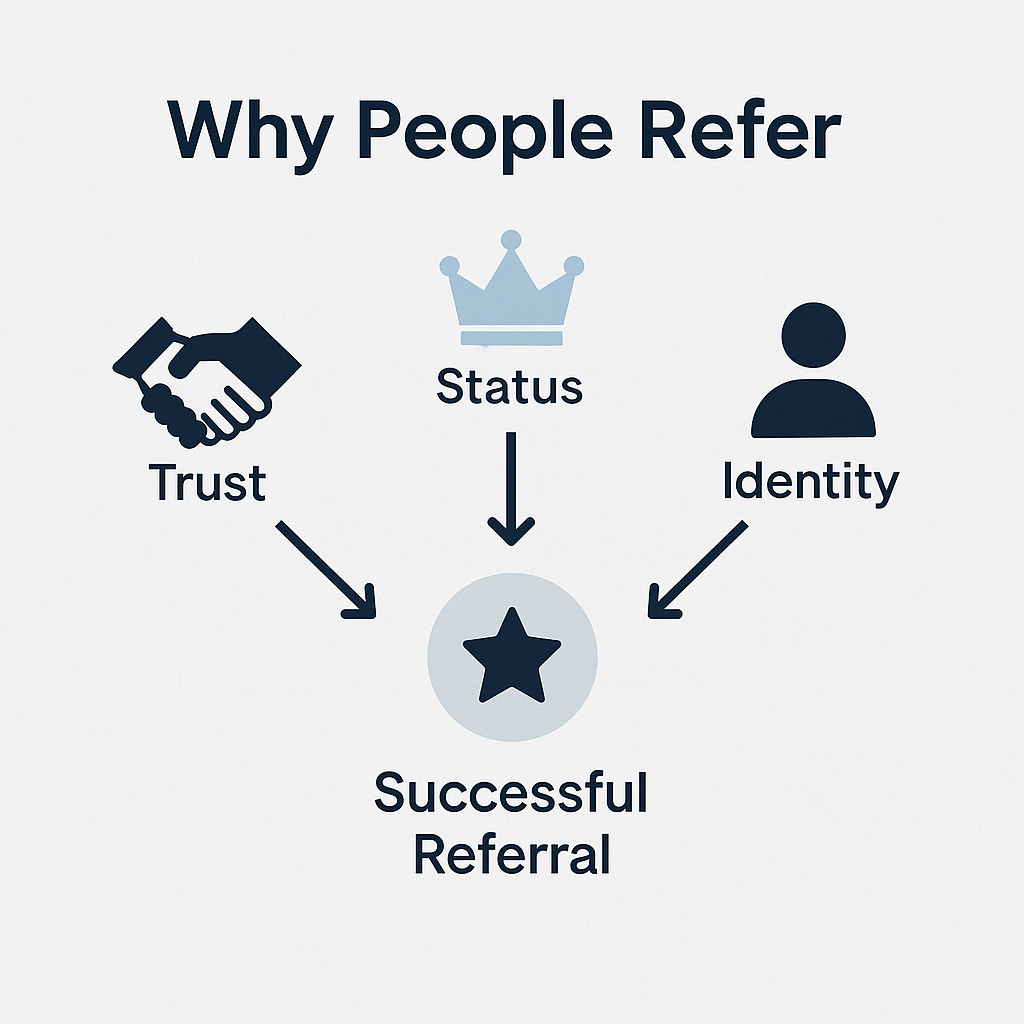
Your Clients Want to Look Good—Help Them
If referring you makes them look smart, exclusive, or generous, they’ll do it proudly.
If it makes them look like they’re trying to cash in on a favor… they’ll avoid it entirely.
That’s why your referral strategy must include:
- Identity triggers (e.g., “Founding Client,” “Ambassador,” “Inner Circle”)
- Social visibility (feature them publicly when they refer)
- Exclusive perks (more on that later)
High performers love to introduce valuable things to their peers.
It raises their perceived value in their circle.
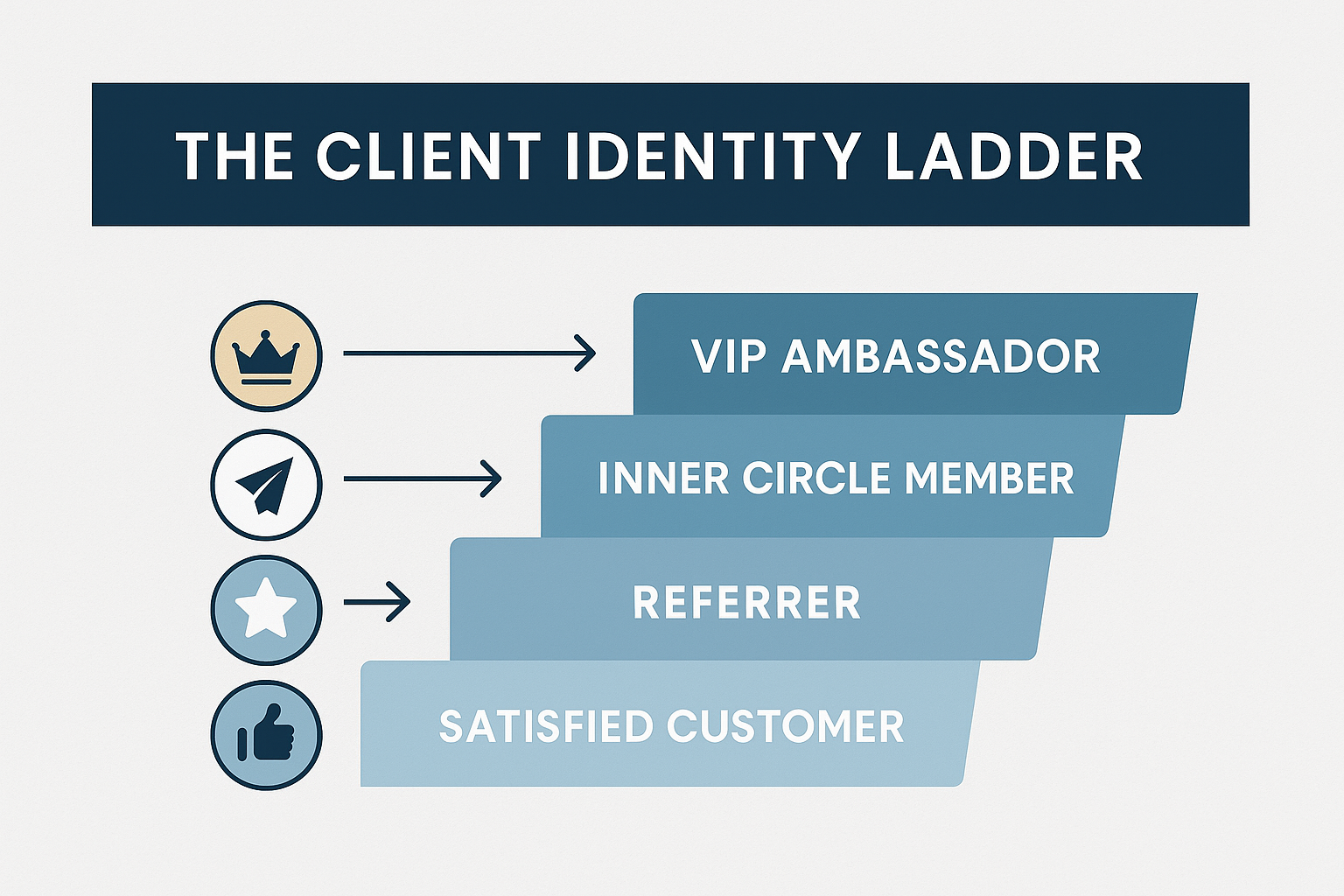
Trust Is Transferred, Not Built
Here’s the real power of referral marketing:
The trust your client has in you is transferred to the person they refer.
No cold nurturing.
No explaining who you are.
No lengthy validation phase.
This is why referred leads skip the skepticism and objections—they’re walking into the relationship with borrowed certainty.
This is especially powerful when combined with exceptional customer service.
When your client experience goes beyond expectations, clients want to talk about it.
They don’t just refer you…
They become your biggest brand advocates.
The Dan Lok 3-Part Referral System
You don’t get high-value referrals by waiting around.
And you don’t earn them by offering $20 coupons or shouting “refer a friend” into the void.
You engineer them.
Here’s the exact 3-part system Dan Lok and his most successful clients use to turn existing customers into a powerful, pre-sold referral engine and for converting prospects into clients.
1. Engineer the Referral Trigger
High-ticket clients don’t refer because they liked working with you.
They refer because it makes them look savvy, connected, and in-the-know.
So your first step?
Make it cool to refer you.
Make Your Offer Feel Exclusive
No one brags about referring to a service anyone can access.
But when your offer feels limited, curated, or invite-only, it creates immediate scarcity.
Language like:
- “Only clients can refer others to this program”
- “Guest passes to this mastermind are limited”
- “Founding member access—referral only”
…automatically triggers curiosity and status.
Give Clients an Identity to Live Into
This is about client self-image.
Don’t just call them “clients.” Call them:
- Inner Circle
- Founding Members
- Premium Partners
- Elite Introducers
This taps into their desire for distinction—and gives them something to talk about.
Turn Client Wins Into Social Proof Moments
The best referral triggers are public.
When you celebrate client wins (especially visibly), you give them a reason to share.
And when they share… referrals happen.
Examples:
- Feature clients in social media case studies
- Create branded “win cards” they can post
- Highlight them on webinars, newsletters, or events
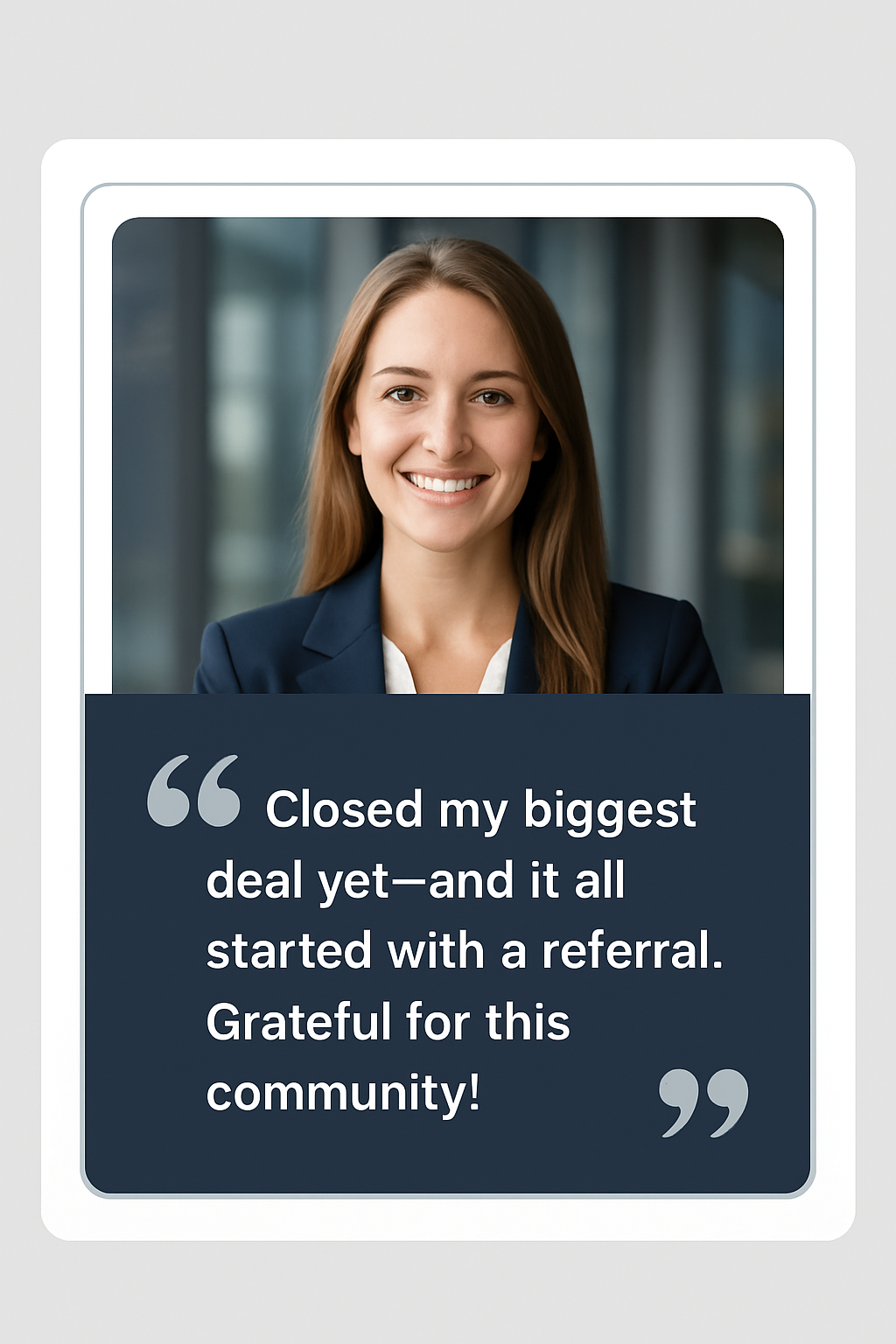
2. Make Referring a Status Play (Not a Transaction)
This is the biggest mistake most businesses make:
They treat referrals like a transaction, when they should be a status signal.
Stop Offering Cash or Discounts
Let’s be blunt:
A $100 Amazon gift card won’t move a seven-figure CEO.
High-performers don’t need your petty cash.
They crave access, recognition, and reputation.
Replace your basic incentive with:
- Invite-only referrals: “Only VIPs can refer others into this program.”
- Prestige perks: early access, private calls, behind-the-scenes strategy sessions
- Recognition: shout-outs in exclusive groups, leaderboard rankings, spotlight features
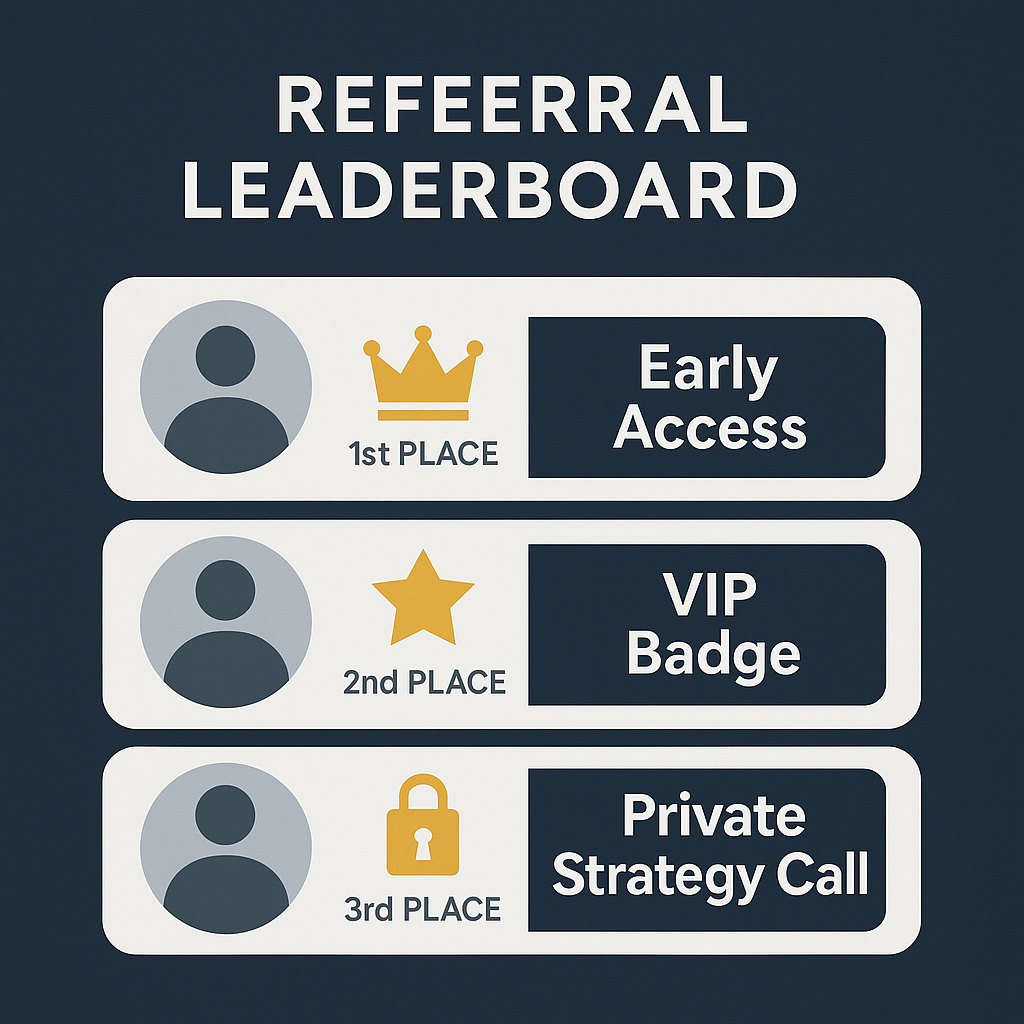
Use the “Red Carpet” Technique
One of Dan’s favorite moves is to give top clients 1-time guest passes into his highest-level programs.
Not everyone gets one.
But when a client makes a powerful referral? That pass becomes the ultimate reward—and the ultimate flex.
It’s not about the prize.
It’s about the prestige of being someone who could open that door for others.
3. Remove Every Barrier to Referrals
Even when clients love you, they won’t refer if the process is too complex.
Here’s what most businesses do wrong:
- Ask clients to remember who needs help
- Expect them to explain what you do
- Require extra steps just to make an intro
That’s too much work.
Your job is to make it impossibly easy.
Tell Clients Exactly Who to Refer
Instead of saying “refer anyone,” get specific:
“Who do you know who’s scaling past $100K and needs help turning leads into high-ticket sales?”
That prompt works better than a generic ask—and helps your clients picture someone instantly.
Give Them Pre-Written Scripts
Make it copy-paste easy.
DMs, emails, or even voice notes.
Example:
“Hey [Name], I just worked with someone who helped me double my monthly revenue. You’re scaling fast—I think you’d love this. Want me to intro you?”
When you pre-write the message, you remove the guesswork—and referrals fly.
Use a Simple Sharing Link
Sometimes the simplest tool is the most powerful.
Create a direct link that:
- Leads to a value-first page
- Tracks referrals
- Feels exclusive and personalized
Even better?
Bundle the link inside a short referral page or portal—with FAQs, visuals, and the exact CTA you want the prospect to take.
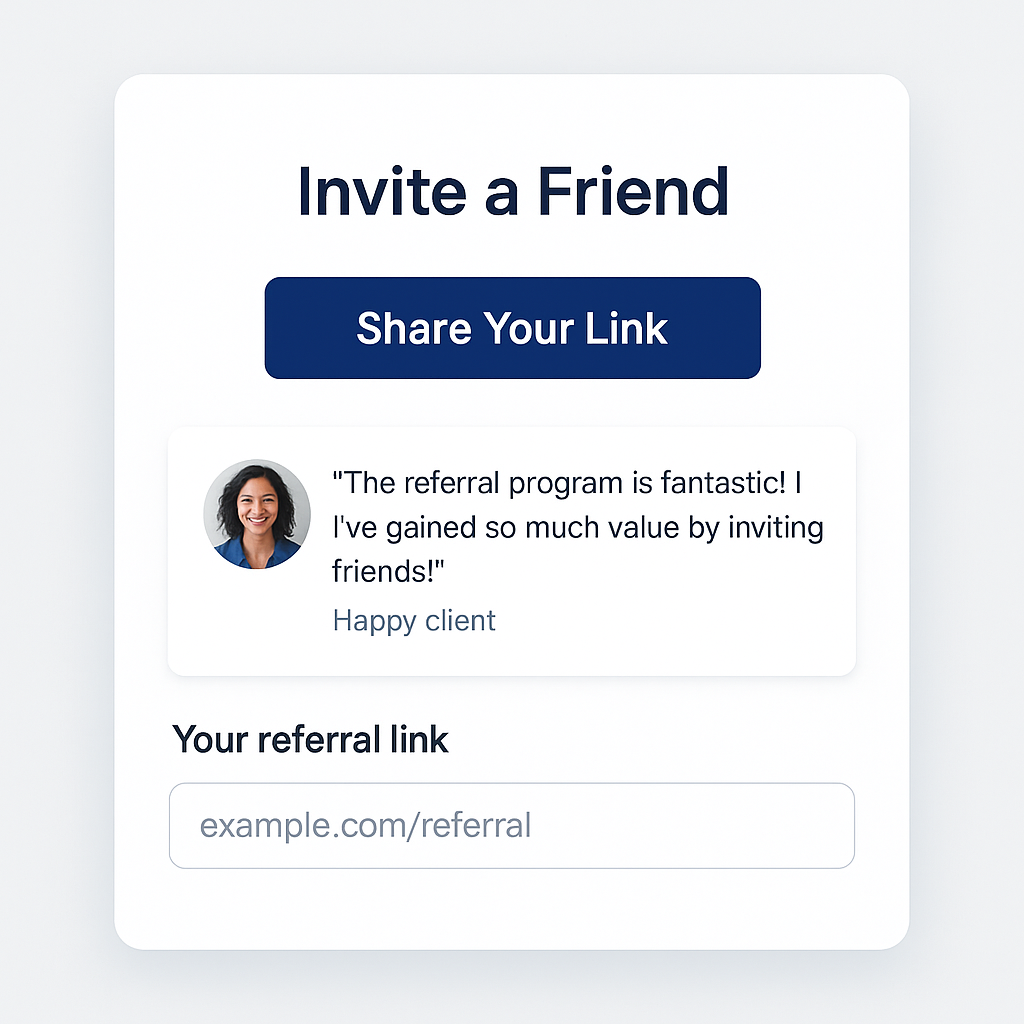
Real-World Referral Examples & Use Cases
You’ve learned the psychology. You’ve got the system. Now let’s look at how it plays out in the real world.
These aren’t theories. These are referral strategies that work—in coaching, consulting, agency work, and beyond.
Case Study #1: The Consultant Who Replaced Paid Ads With Referrals
Meet Jason, a high-performance business consultant. For years, he spent over $12,000/month on ads—just to stay visible in a crowded market.
But when Jason restructured his offer to include referral rewards and created a client-only “Founders Circle,” things changed fast.
- He gave his most loyal customers early access to new training
- He featured their wins on social media (boosting social proof)
- He handed out 1-click referral links with pre-written scripts
The result?
Within 6 months, 83% of his new customers came through referrals—with zero ad spend.
And those referred clients?
- Converted faster
- Had higher customer retention rates
- Were more profitable overall
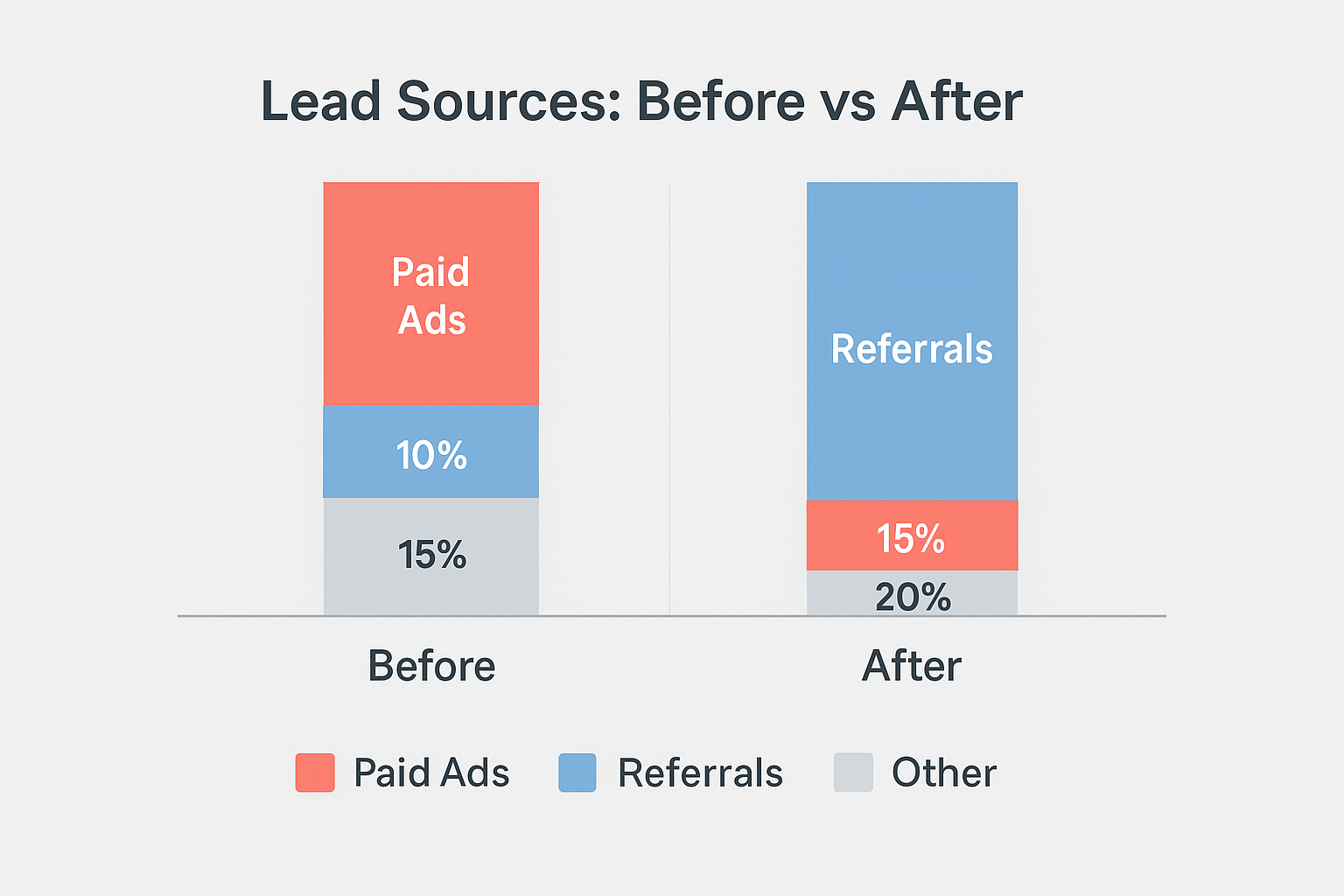
Case Study #2: The Coach Who Built a “Referral Engine”
Amira runs a high-ticket coaching business focused on scaling women entrepreneurs past $250K/year.
Instead of a public referral program, she created a private “Client Ambassador” tier:
- Clients were hand-selected to refer others
- Referrals received a VIP welcome experience
- Referrers got spotlighted in her private group and invited to live retreats
She used a mix of:
- Referral tracking tools integrated into her CRM
- Personalized “invite a friend” links
- Tiered rewards based on customer data (e.g., referrals that converted into $50K+ packages got upgraded access)
This turned her most loyal clients into her most powerful sales channel.
Today, Amira doesn’t chase leads.
She closes referred leads who already trust her—and often come in pre-sold.

Quick Wins You Can Steal
You don’t need a massive team or complex funnel to make referral marketing work.
Here are plug-and-play tactics used by businesses just like yours:
- “Bring a Friend” campaigns for workshops or webinars
- Invite-only Slack or WhatsApp groups for referrers
- Post-purchase referral emails (“Know someone who needs this?”)
- Referral contests with prestige-based prizes like VIP calls—not cash
- Birthday or milestone triggers for asking referrals when clients are happiest
Each tactic works because it blends timing, ease, and identity—the holy trinity of referrals.
How to Launch a Referral Program That Converts
It’s one thing to want more referrals.
It’s another to actually launch a referral marketing program that brings in premium leads consistently.
Here’s your step-by-step game plan—built for coaches, consultants, and entrepreneurs who are ready to stop hoping and start engineering real results.
Step 1: Choose the Right Referral Model
Not all referral programs are created equal. And what works for a SaaS company may fail for a high-ticket consultant.
Here are three proven models to choose from:
- Invite-Only Access – Best for premium services. Only existing clients can refer. Creates exclusivity.
- Referral Rewards Ladder – Tiered incentives based on value. Ideal if you sell multiple offers.
- Private Ambassador Club – Long-term play. Create a “client influencer” tier that gets perks and visibility.
The key? Match your model to your brand positioning.
You’re not offering store credit. You’re offering status.
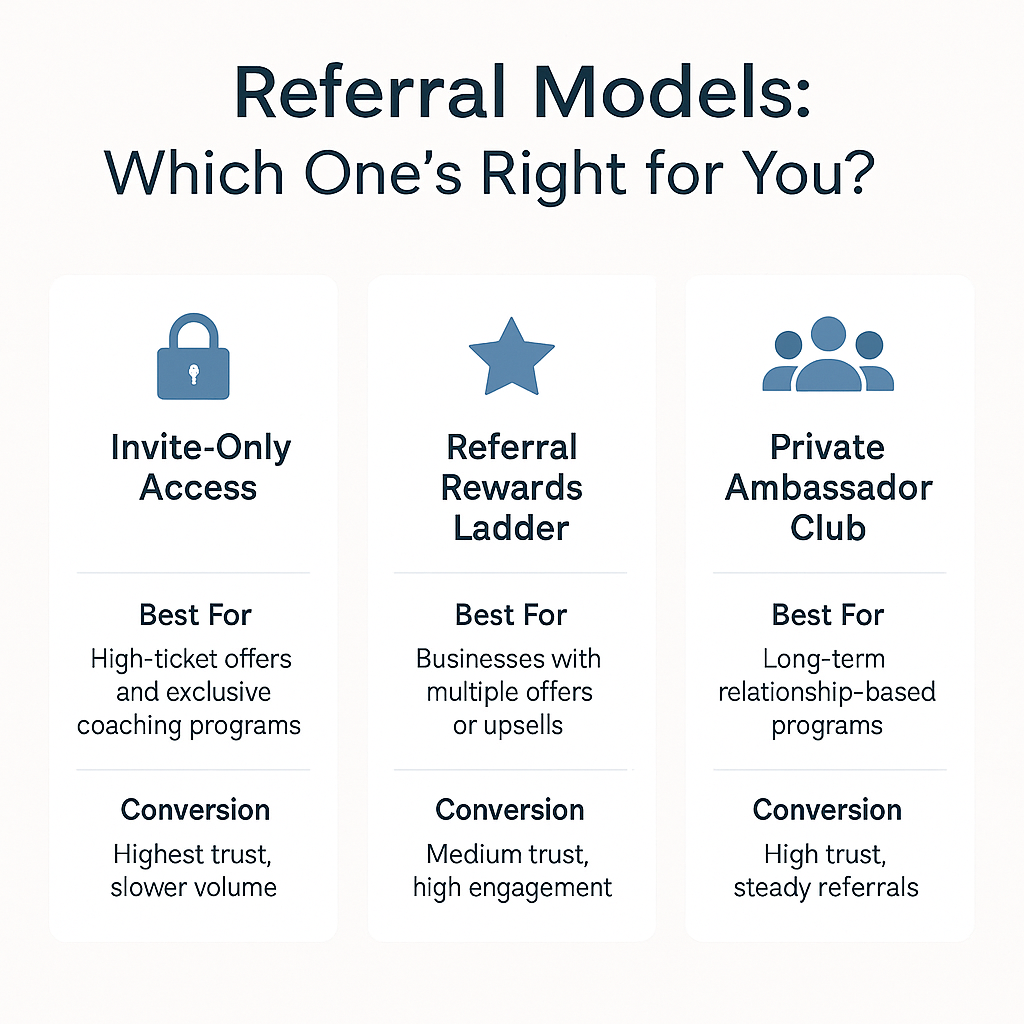
Step 2: Build the Referral Program Page
Your referral page is your conversion hub. Don’t skip this.
It should:
- Explain the referral process clearly
- Reinforce exclusivity (only insiders can refer)
- Offer pre-written DMs or emails
- Provide a trackable referral link
Pro Tip: Use tools like ReferralCandy, Tapfiliate, or a custom CRM referral module to make this seamless.
This is also a great place to include:
- Social proof
- Screenshots of client wins
- FAQs about the reward or onboarding process

Step 3: Time Your Ask (And Make It Easy)
Most businesses ask for referrals at the wrong time—when the client is mid-delivery or overwhelmed.
Instead, ask when:
- The client has just gotten a major win
- You’ve delivered a great result ahead of schedule
- They’re giving you unsolicited praise
Combine that with a simple message like:
“You crushed it this month. If you know anyone else like you who’s ready to scale, I’d love to talk to them. Want me to send you a quick intro message to forward?”
Make it copy-paste easy.
Even better—embed this referral CTA inside your post-purchase or milestone emails.
Step 4: Track, Optimize, and Celebrate
Once you launch, don’t go silent.
Use your customer data and CRM to track:
- Total referrals
- Conversion rate of referrals
- Source (who’s sending the best leads)
Then, celebrate your top referrers:
- Highlight them in your newsletter
- Shout them out during live calls
- Surprise them with private access, 1:1 time, or unique gifts
This reinforces the behavior—and makes referring part of your client culture.
Referral Tools, Software, and Automation
Once your referral system is working, the next step is to automate the flow so you’re not manually tracking introductions in a spreadsheet.
Technology won’t do the selling for you—but it will eliminate friction, save time, and make your referral engine scalable.
Here’s the ultimate tech stack for high-ticket entrepreneurs.
Referral Software That Actually Works
If you’re serious about creating a real referral marketing program, you need tools that:
- Track individual referrals
- Automate reward triggers
- Integrate with your CRM or email system
- Offer branded referral pages and links
Top options include:
- ReferralCandy – Easy to use and great for digital products
- Tapfiliate – Integrates with major platforms and CRMs
- InviteReferrals – Best for multi-channel campaigns
- PartnerStack – Ideal if you’re building an affiliate/referral hybrid
These tools help you run referral campaigns with full transparency—so your best clients know how they’re contributing and what they’re earning.
Integrating With Your CRM and Automation Stack
Your CRM (Customer Relationship Management) system is the brain of your referral engine.
Whether you’re using HubSpot, GoHighLevel, ActiveCampaign, or something else—make sure you can:
- Track which existing customers referred whom
- Tag referrers and referred clients separately
- Trigger automations based on behavior (e.g., new referral → send thank you + bonus)
Pro Tip: Set up email flows like:
- “You just earned a referral bonus!”
- “Your referral booked a call—well done.”
- “Only 1 more referral until VIP status unlocks…”
This creates gamification and momentum inside your client base.
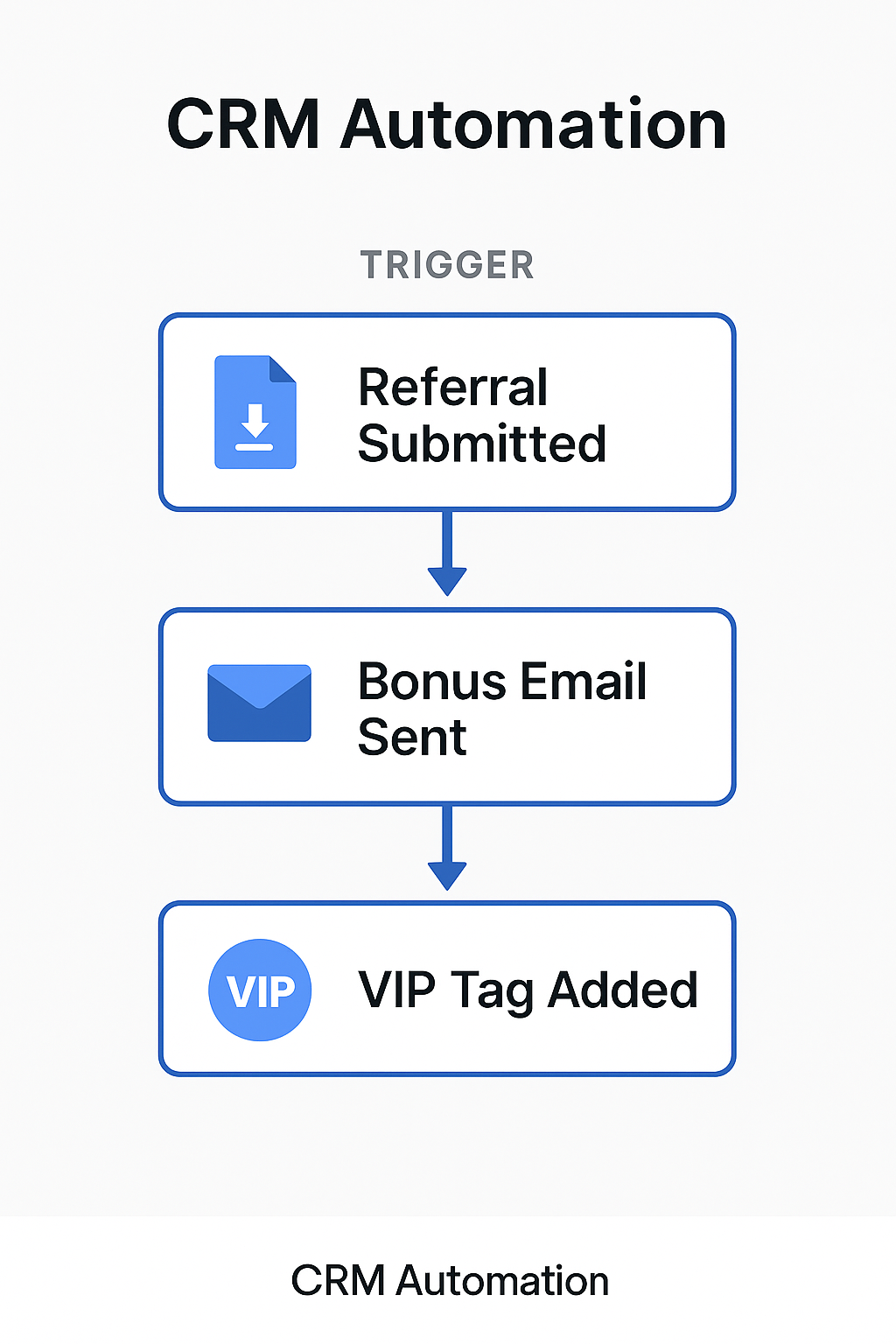
Bonus Tools to Supercharge Your Referral Program
Want to go next level? Layer in these tools:
- Bonjoro – Send personal thank-you videos to referrers
- Typeform – Create a “Referral Intake” form to capture custom leads
- Slack or WhatsApp – Build a referrer-only community
- Trello or Airtable – Track manual referrals if you’re just getting started
The key is: Don’t overcomplicate.
Start with one or two tools, integrate with your existing stack, and optimize as you go.
Scaling Word-of-Mouth in a Digital World
Old-school word-of-mouth worked around the dinner table.
Today, it happens in DMs, Slack channels, and podcast shoutouts.
If you want referrals at scale, you can’t rely solely on 1:1 introductions. You need to embed your referral triggers into the digital spaces where your clients already hang out.
Here’s how to turn your brand into a referral magnet—even when you’re not in the room.
1. Activate Private Communities and Peer Circles
Your most loyal customers already talk to other high-performers in their network—on LinkedIn, in mastermind groups, or inside private WhatsApp chats.
Here’s how to position your business in those circles:
- Create a referrer-only community (Slack, Discord, Facebook, WhatsApp)
- Encourage discussions that showcase transformation stories
- Drop shareable assets like “win screenshots” or mini case studies for clients to repost
This builds digital momentum and makes sharing feel natural—not forced.

2. Leverage Content to Spark Referrals
Your content can do more than attract strangers—it can help clients refer you without effort.
Try these formats:
- Podcast guest features where your clients talk about their journey
- Short video testimonials clients can share with peers
- Behind-the-scenes content showing the value of your premium experience
Then arm your clients with links, captions, and context so they can easily send those assets to friends and peers.
This isn’t marketing—it’s peer-to-peer proof, and it travels faster than any ad.
3. Turn Live Events and Webinars Into Referral Engines
Industry events are filled with your ideal target audience—and your best clients are already in the room.
Here’s how to turn those moments into referral explosions:
- Let clients bring a guest to your next webinar or workshop
- Hand out VIP invites at in-person events or retreats
- Run “Referral Sprints” post-event (e.g., “Invite 1 friend this week—get a private Q&A session”)
Every time a client has a meaningful experience, give them a reason to share it immediately.
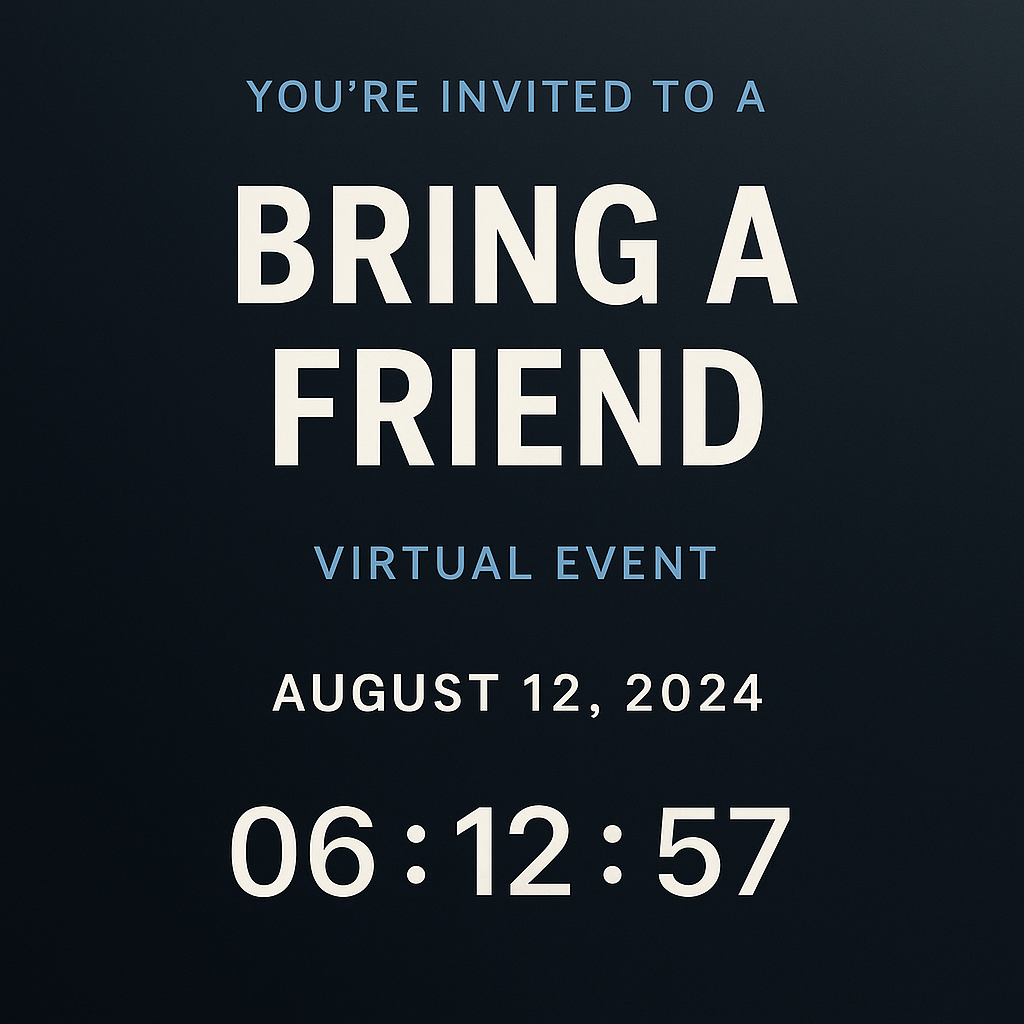
4. Dominate Online Forums and Niche Spaces
Referrals don’t just happen in DMs—they also happen in:
- Reddit threads
- Private Facebook groups
- Niche Slack communities
- Paid mastermind chats
Equip your clients with language and assets they can use in these spaces, like:
- One-liner pitch of what you do
- Quick client win statements (“I went from $30K to $90K/month using this”)
- Learn the power of copywriting secrets to grow your business
- Links that feel helpful, not salesy
Make it easy for clients to be your biggest brand advocates—even when you’re not around to prompt them.
Avoid These Referral Marketing Mistakes
Most entrepreneurs say they want more referrals.
But in practice?
They sabotage themselves with half-baked strategies, lazy copy, or incentives that scream “I don’t understand high-ticket.”
Here are the biggest mistakes that ruin referral marketing efforts—and how to avoid them.
Mistake #1: Making It All About the Money
Offering cash, discounts, or store credit may work for low-ticket products. But for high-end services?
It backfires.
Why?
Because it cheapens the brand, and signals that you don’t understand your clients’ real motivations—status, identity, impact.
Fix it: Focus on access, recognition, and exclusivity instead. Give them early access, private calls, or a custom referral tier.
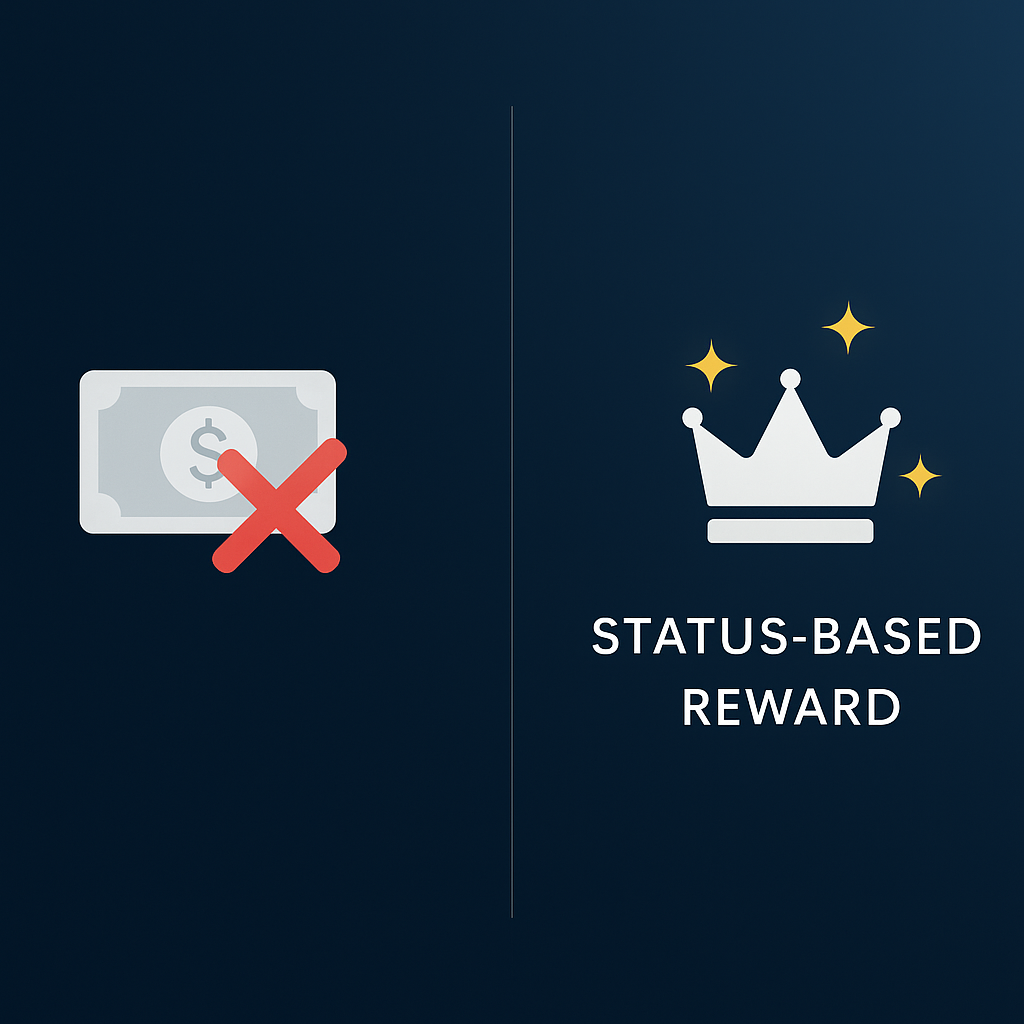
Mistake #2: Not Telling Clients Who to Refer
Vague asks = no action.
If you’re saying “Know anyone who needs this?” …that’s too much work.
Fix it: Paint a clear picture.
Try: “Who do you know who just crossed $100K and is stuck trying to close premium clients without burning out?”
You’re not begging—you’re positioning.
Mistake #3: Asking at the Wrong Time
Don’t ask for a referral mid-project when your client is stressed or unclear on results.
Fix it: Time your ask to a moment of momentum—like after a win, testimonial, or breakthrough.
Use milestone emails, Slack pings, or personal video messages.
Mistake #4: Making It Complicated
If your referral process requires more than two steps, it’s broken.
Too many entrepreneurs ask clients to:
- Write custom intros
- Explain what they do
- Walk the lead through onboarding
Your clients aren’t your sales team.
Fix it: Use simple referral links, copy-paste messages, or a branded referral page. Make the ask feel like a favor to the lead, not a task for the referrer.
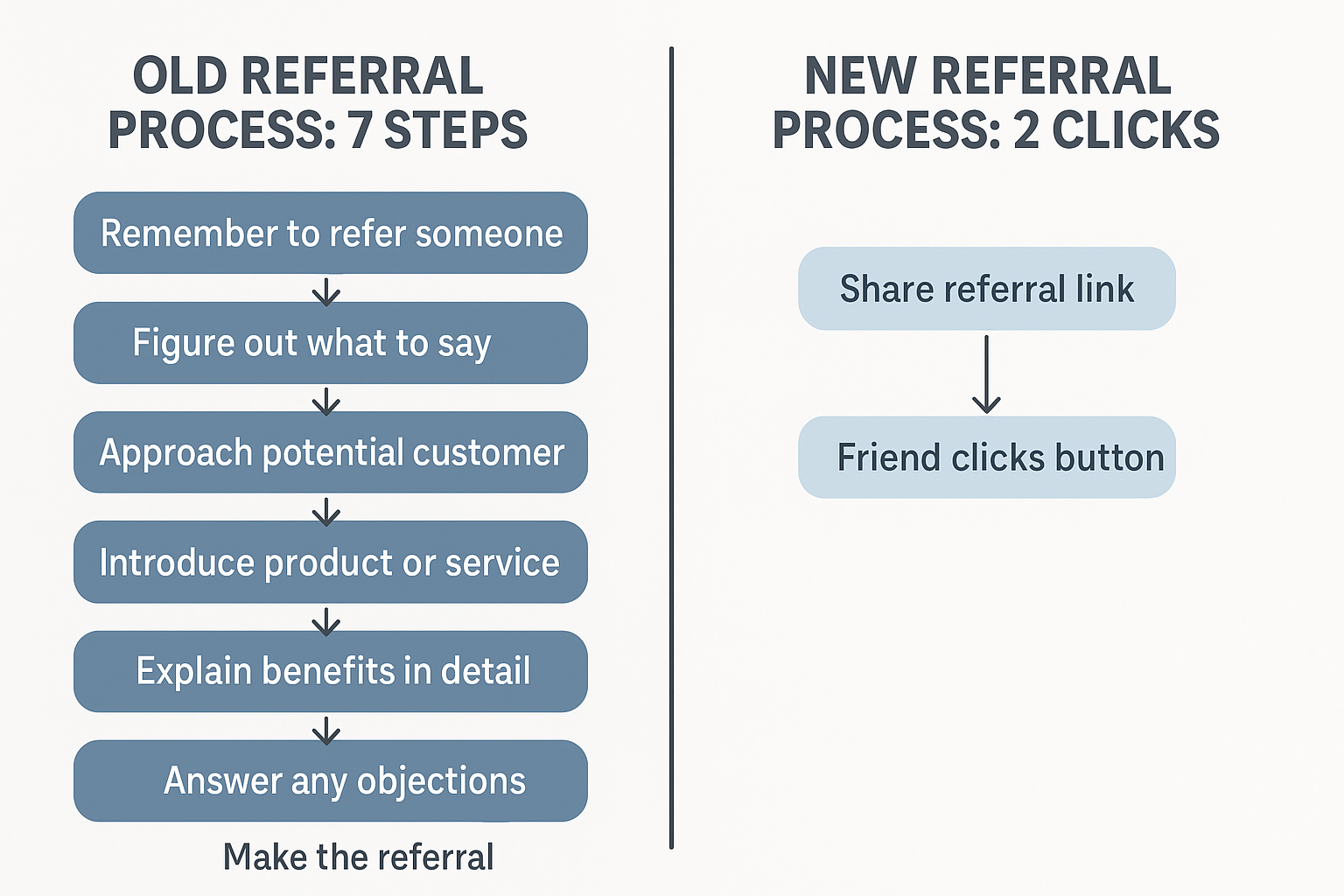
Mistake #5: Failing to Acknowledge and Celebrate
No one wants to send you a $25K lead and get… silence.
Fix it: Set up automated thank-you emails, shout-outs, or bonus unlocks.
Even better—publicly recognize your top referrers during events, newsletters, or team calls.
It’s not just good etiquette. It reinforces the behavior.
Turn Referrals Into Your #1 Growth Engine
You don’t need more ads.
You don’t need more funnels.
You need more conversations happening about you when you’re not in the room.
That’s what referral marketing unlocks.
When done right, it transforms your business into an invite-only ecosystem where premium clients bring more premium clients;without pushy tactics, complicated outreach, or massive ad budgets.
Let’s recap what you’ve built in this guide:
- A deep understanding of referral psychology
- A clear, actionable 3-part referral system
- Real-world examples of what actually works
- Tools and automation to make referrals effortless
- The mistakes to avoid so you don’t sabotage the whole thing
Now it’s time to implement.
Because if you do?
You’ll never have to chase cold leads again.
Your clients will be too busy doing the selling for you.
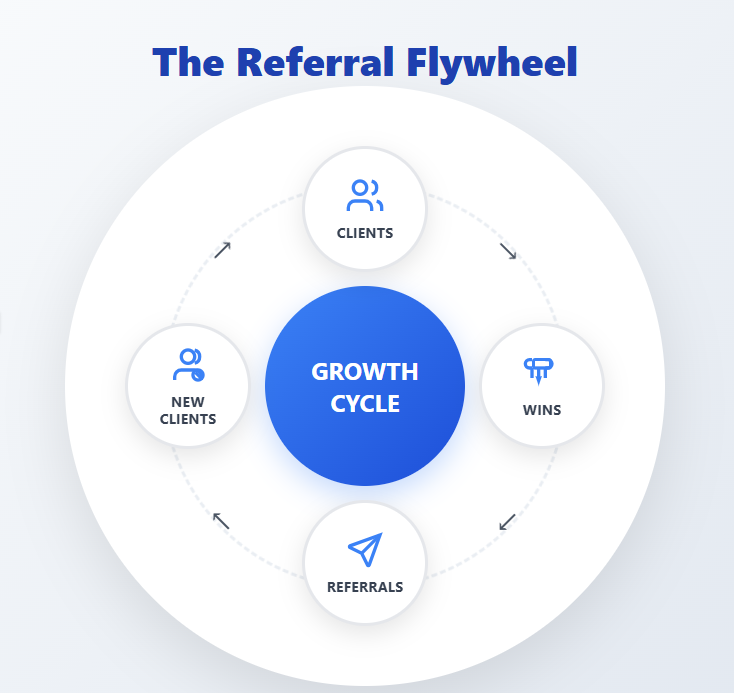
Want Referrals That Close Themselves? Start Here.
You can’t engineer referrals without an irresistible offer—
and you’ll never attract premium clients if you’re stuck chasing low-quality leads.
If you want high-ticket clients to brag about you, refer you, and sell for you…
you need a client acquisition system that actually works.
That’s exactly what you’ll build inside:
The S.M.A.R.T. Challenge
In this proven high-ticket sales experience, you’ll discover:
-
How to consistently attract premium clients—without chasing or begging
-
How to close high-value deals without pressure or discounting
-
How to scale your income using Dan Lok’s inbound high-ticket framework
This isn’t theory. These are the exact systems Dan and his top clients use to generate predictable, inbound growth with fewer sales calls and higher conversions.
If you’re serious about creating a high-referral, high-revenue business—
this is your next move.
